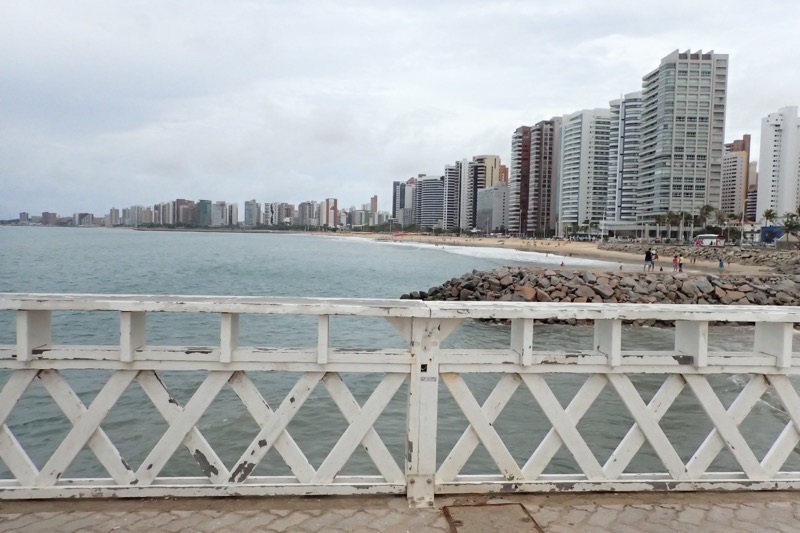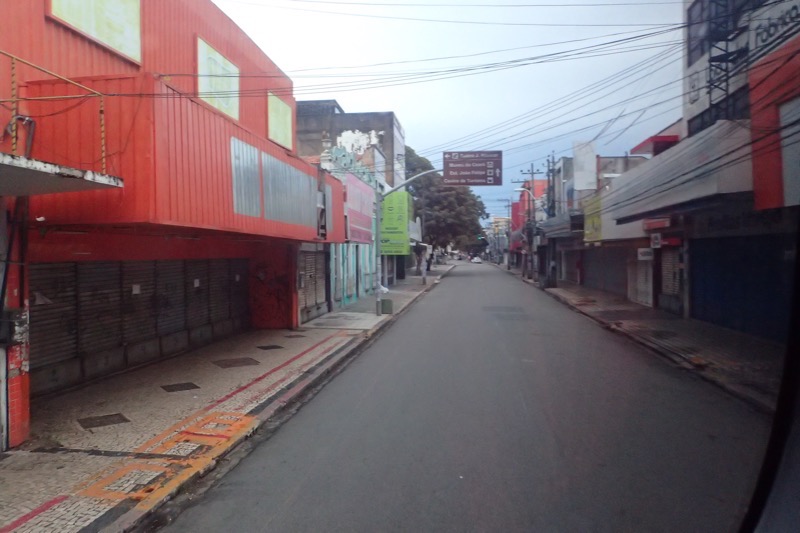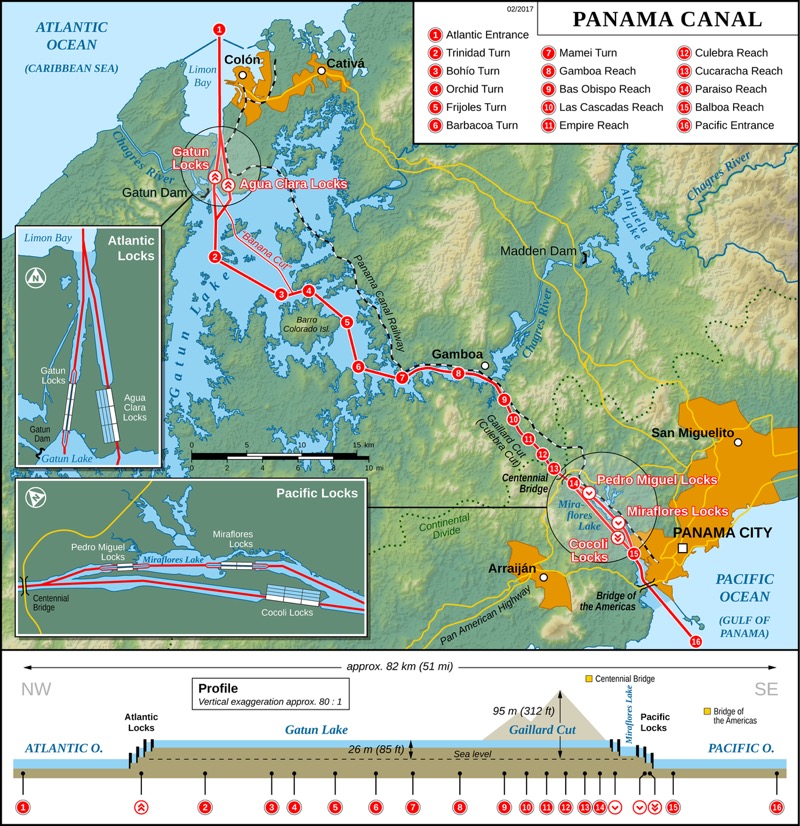 The Panama Canal is a 77 km, manmade, waterway that cuts through the country of Panama connecting the Atlantic Ocean to the Pacific Ocean. The canal is a major international maritime trade route… and on every cruisers check list. We were up early to get a good look at the entry area near the town of Christobel.
The Panama Canal is a 77 km, manmade, waterway that cuts through the country of Panama connecting the Atlantic Ocean to the Pacific Ocean. The canal is a major international maritime trade route… and on every cruisers check list. We were up early to get a good look at the entry area near the town of Christobel.
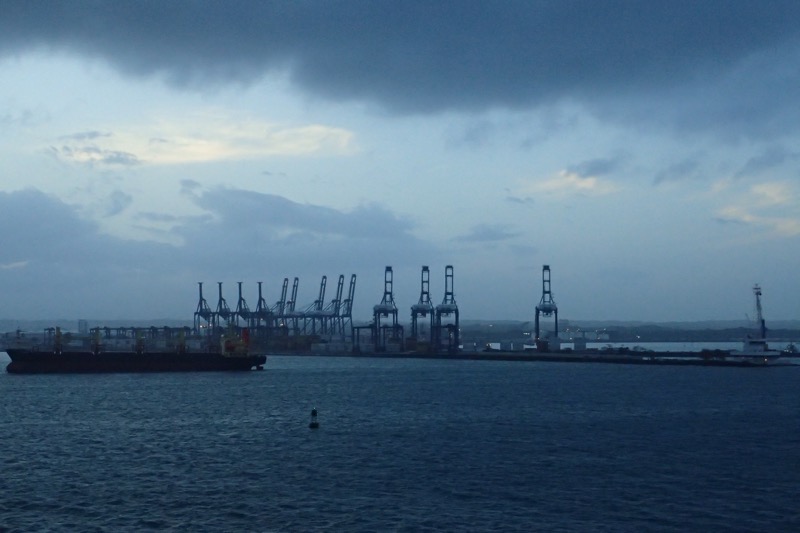 At either end of the canal are major port operations allowing for the offloading of containers to be moved by rail instead of through the lock system. The locks assist ships in being elevated 26 metres above sea level to a large manmade lake, Gatun Lake, and again a second set of locks allow the ships to be moved back down to sea level on the Panama City side. The entire system was devised to allow ships to avoid the hazardous and time consuming Cape Horn route in the southernmost tip of South America via the Straits of Magellan or the Drake Passage – where we were just a few short weeks ago.
At either end of the canal are major port operations allowing for the offloading of containers to be moved by rail instead of through the lock system. The locks assist ships in being elevated 26 metres above sea level to a large manmade lake, Gatun Lake, and again a second set of locks allow the ships to be moved back down to sea level on the Panama City side. The entire system was devised to allow ships to avoid the hazardous and time consuming Cape Horn route in the southernmost tip of South America via the Straits of Magellan or the Drake Passage – where we were just a few short weeks ago.
The original locks were only 33.5m wide, which is quite spectacular when you consider our ship is literally 33m across the beam, leaving barely 1 foot of clearance on either side! Our ship has actually been built to a Panamax standard, which is the maximum allowable width before it is no longer able to traverse the Panama Canal. The Grand class ships in the Princess fleet are unable to do this transit and instead have to access other areas of the globe by TransAtlantic crossings instead – eg: the Grand, the Ruby, the Caribbean and Royal and Regal Princesses.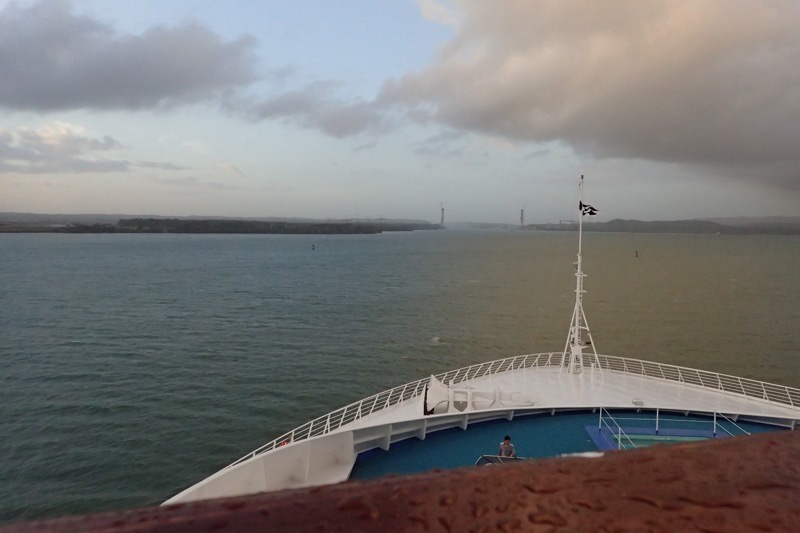 A larger, wider canal was finished in 2016 and it allows for Post-Panamax ships to move through which are capable of carrying more cargo.
A larger, wider canal was finished in 2016 and it allows for Post-Panamax ships to move through which are capable of carrying more cargo.
France was the first country to begin work on the canal in 1881, but they had to call it quits due to an extraordinary number of workers dying on the site, and a multitude of engineering problems – and I mean extraordinary numbers of worker fatalities, some 26,000 men, many of whom died due to yellow fever and malaria in a time where the role of mosquitos in disease transference was not yet understood. Much politicking and international treatises and whatnot later, the canal we see today was eventually built under American rule and ownership, with semi-military engineering supervision and involvement. When looking at all these photos of the canal – it is most interesting to note the differing water levels of each lock, that allow the ships to move north and south through the system. The canal was officially opened in 1914 and initially saw about 1,000 ships per year utilising the canal. Most recent numbers see approximately 15,000 ships pass through the canal each year, and a total of 815,000 vessels had used it by 2012.
When looking at all these photos of the canal – it is most interesting to note the differing water levels of each lock, that allow the ships to move north and south through the system. The canal was officially opened in 1914 and initially saw about 1,000 ships per year utilising the canal. Most recent numbers see approximately 15,000 ships pass through the canal each year, and a total of 815,000 vessels had used it by 2012.
It takes 6 to 8 hours to make a full transit through the canal, and our transit was actually held up somewhat by a huge natural gas freighter moving through the new canal, and the regulations surrounding how close passenger ships are able to be to this type of ship during a transit… I guess if something goes wrong and the whole thing goes to shit in a ball of flames, they don’t really need 2000 tourists and 1000 cruise ship crew caught in the middle of a huge industrial accident like that.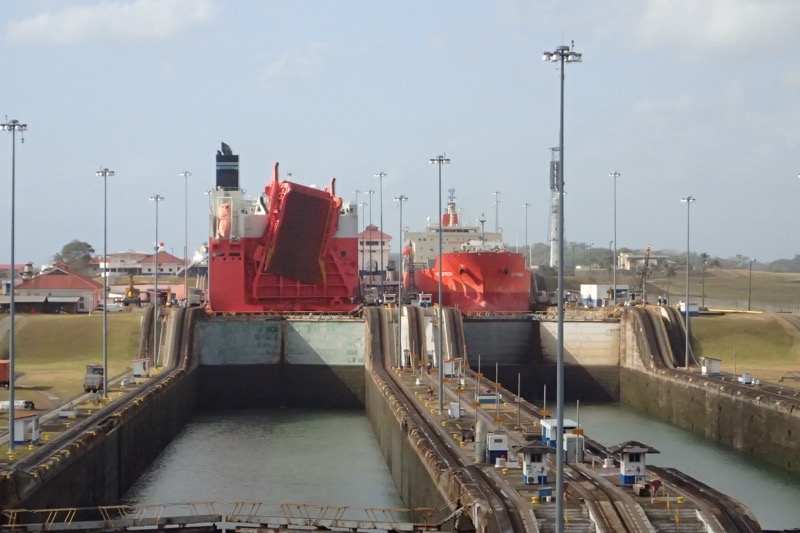 We were spoon fed a lot of history about the canal across the Panama Isthmus today by our destination expert, Hutch, and while I find this stuff quite interesting – feel free to zone out about now. The first proposals of a canal across Panama date back to 1534 when Charles V of Spain conducted a survey looking for a route that would make the voyage for ships travelling Spain to Peru, shorter and easier thereby giving Spain a significant military advantage over the Portuguese.
We were spoon fed a lot of history about the canal across the Panama Isthmus today by our destination expert, Hutch, and while I find this stuff quite interesting – feel free to zone out about now. The first proposals of a canal across Panama date back to 1534 when Charles V of Spain conducted a survey looking for a route that would make the voyage for ships travelling Spain to Peru, shorter and easier thereby giving Spain a significant military advantage over the Portuguese.
In the mid 1600s, an English philosopher also proposed a short cut through Panama to the East Indies and China. IN 1788, Thomas Jefferson was encouraging the Spanish to create the same short cut so they could avoid the treacherous southern transit around the Horn. And in the late 1700s, Alassandro Malaspina (sp?) finally came up with some plans for construction of a sea level canal. Additionally, the Scots also planned, in 1698, what eventually became the failed Darien scheme, which was ditched due to ‘inhospitable’ conditions in 1700.
Another effort came about in 1843, this time by some British in conjunction with the Republic of Granada. It was a primarily British endeavour and was set to be built in 5 years, however that all proved fruitless too.
In 1846, the US got involved in negotiating transit rights with Columbia (then owner of Panama) as their interest in being able to move gold from the California goldfields to the east coast increased. The Panama Railway was built by the US to cross the isthmus in about 1855)… Around the same time, a UK born engineer working for the US rolled out yet another proposal for a water canal, and the French were engage in starting building on this after their success with the Suez Canal. Alas the French screwed the pooch (overcome by climate, disease, heavy tropical rain and forest conditions), and the original sea-level canal was ditched in favour of a lock system and man made lake approach, because they were totally unprepared for the 10m rise in water that occurs every rainy season.
By this time, more was known about the spread of yellow fever and malaria and by the late 1800s, the death rate among workers fell to at ‘tolerable’ 200 per month?! (wtf?) The French effort eventually went totally bankrupt in 1889 after spending more than USD$280,000,000, which wiped out the savings of over 800,000 investors. The Panama Affair saw some prosecuted and imprisoned, though not for long.
Not long later, another French company picked up the project and tried to resurrect it using the old available assets, but eventually they sold out to the US for a song (all things being relative), and the US got involved in 1902. Long political campaign and legisilative wrangling omitted here, but the US eventually finished the canal and it was opened in 1914 on President Theodore Roosevelt’s watch.
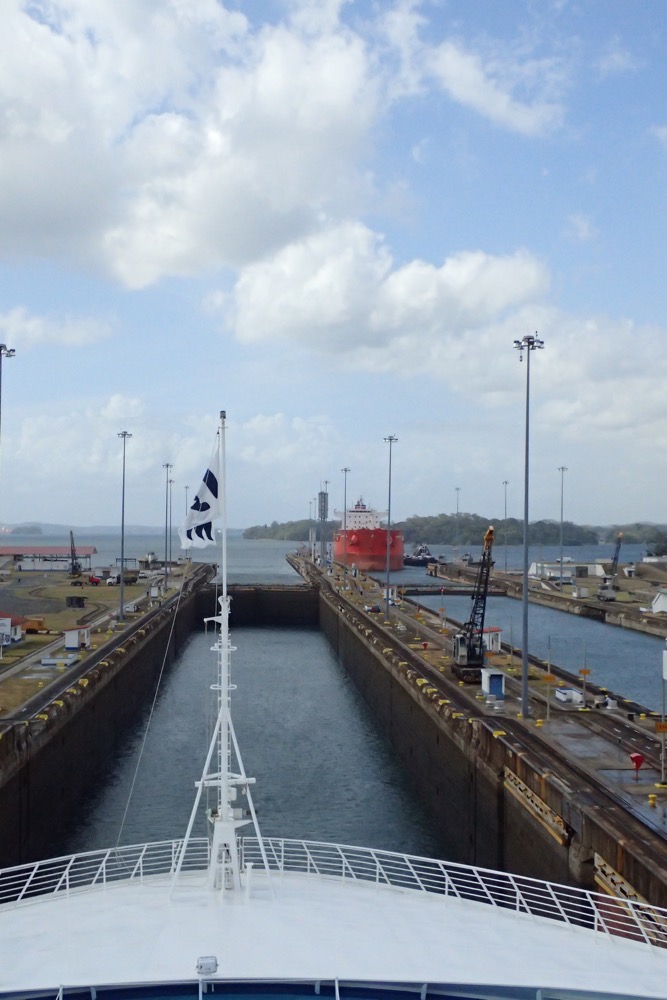 Going through the locks now – you can see what an enormous undertaking it was. It is easily as impressive as seeing the Hoover Dam or the Great Wall of China. The Gatun locks:
Going through the locks now – you can see what an enormous undertaking it was. It is easily as impressive as seeing the Hoover Dam or the Great Wall of China. The Gatun locks: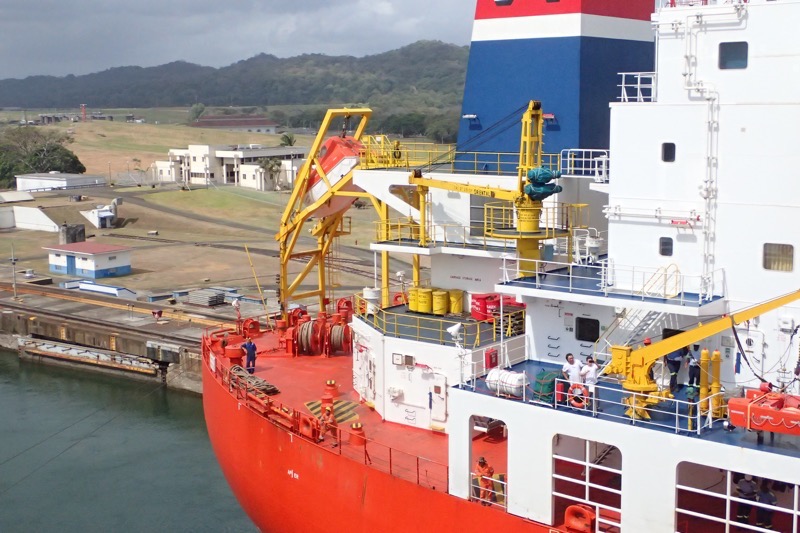

After making our way through the first set of locks, we were put into a holding pattern, waiting for the aforementioned naturals gas Post-Panamax ship to traverse the new canal. Friends of ours who have a suite on the back of the ship were having a bit of a party, and after running all around the open decks checking out the canal for most of the morning, we decided to go down and join the party tarts… aka ‘The Nookies’! We got down to D750 and found a very happy crew enjoying the view, a quick rain shower and a lot of laughs… 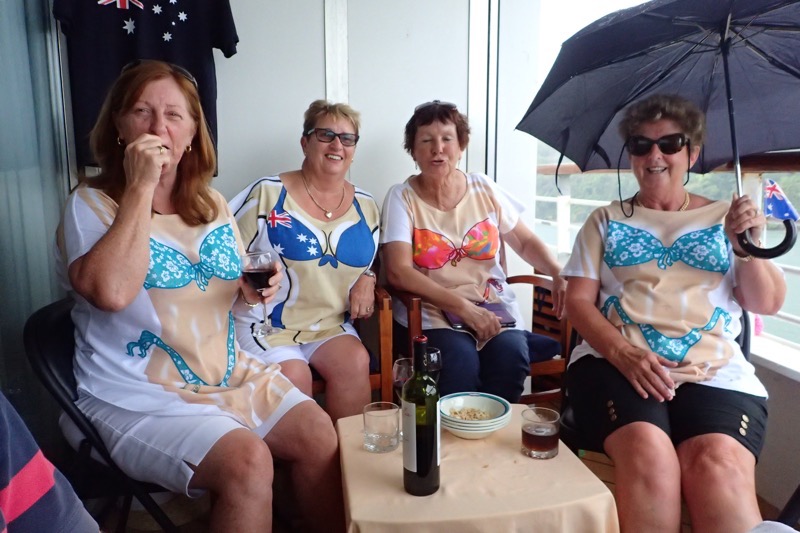 Marie, Sandra, Kathleen, and Sandy all dressed up for ‘flashing’ onlookers and the local tug boat captains! 🙂
Marie, Sandra, Kathleen, and Sandy all dressed up for ‘flashing’ onlookers and the local tug boat captains! 🙂 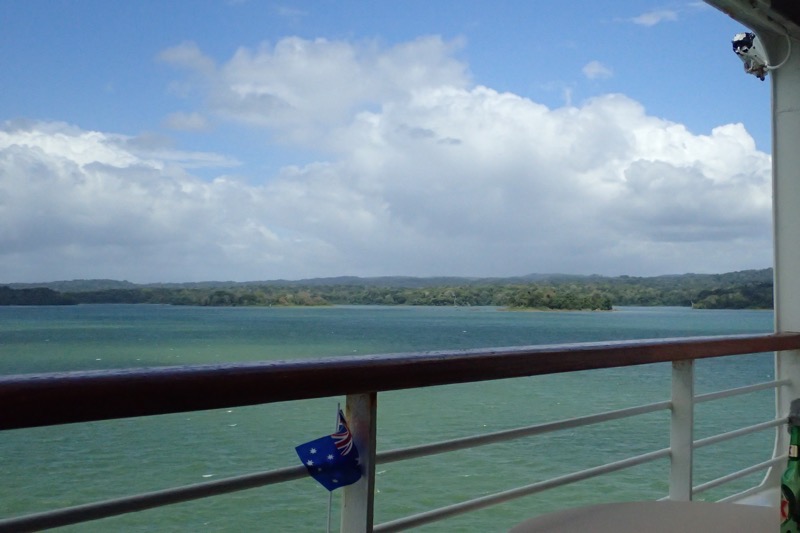 Views of the Gatun Lake…
Views of the Gatun Lake…
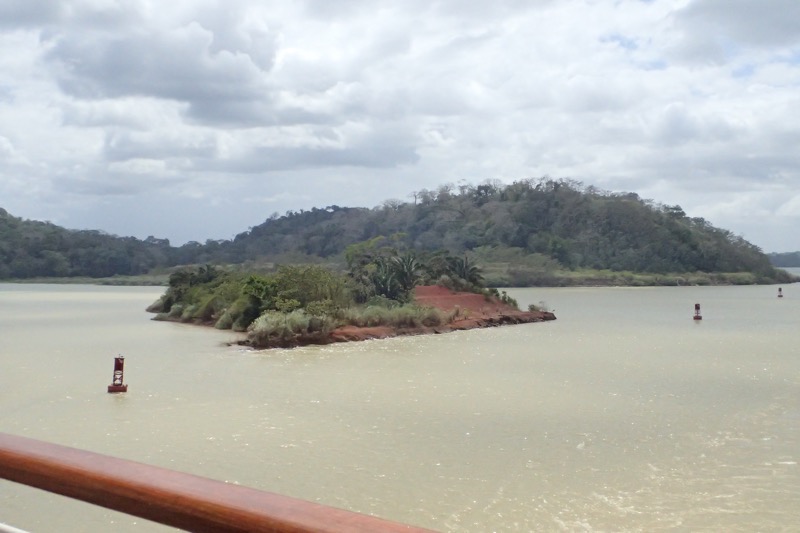
 Lunchtime with the Nookies; Terry, Barry, John and Mick (aka Mick The Official, and Original, Bad Influence!)
Lunchtime with the Nookies; Terry, Barry, John and Mick (aka Mick The Official, and Original, Bad Influence!)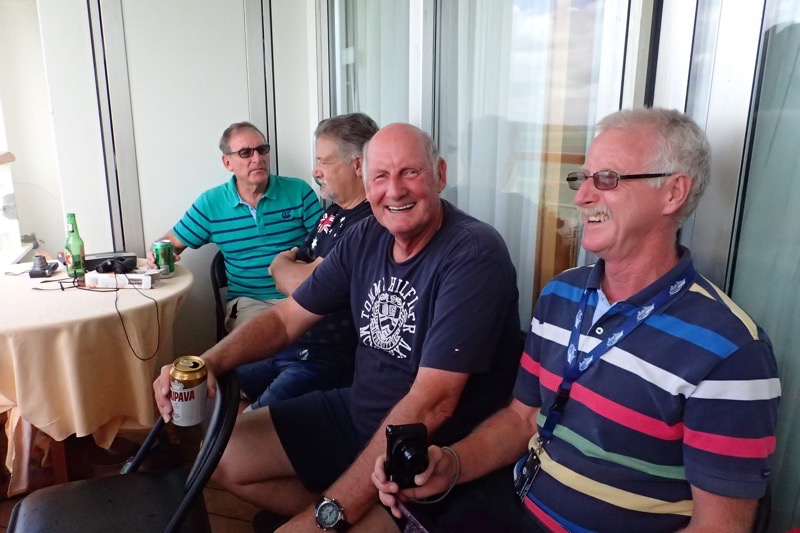 The Girls taunting the local tug boat captains with their ‘girls’. 😉
The Girls taunting the local tug boat captains with their ‘girls’. 😉 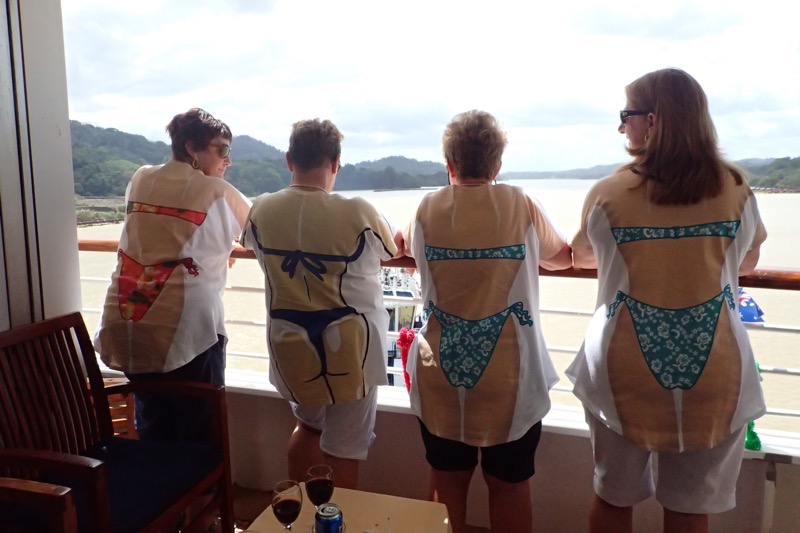
 One of the tugboats who was following us for quite some time was doing donuts in the water for our amusement and talking to us over their PA system… when we held out beers for them, they said “We wish.” and “Now, you’re just being mean!” as we were partying on the deck and they were stuck working… poor fellas. I think they followed us for an hour hoping someone was going to flash their bits! 🙂
One of the tugboats who was following us for quite some time was doing donuts in the water for our amusement and talking to us over their PA system… when we held out beers for them, they said “We wish.” and “Now, you’re just being mean!” as we were partying on the deck and they were stuck working… poor fellas. I think they followed us for an hour hoping someone was going to flash their bits! 🙂 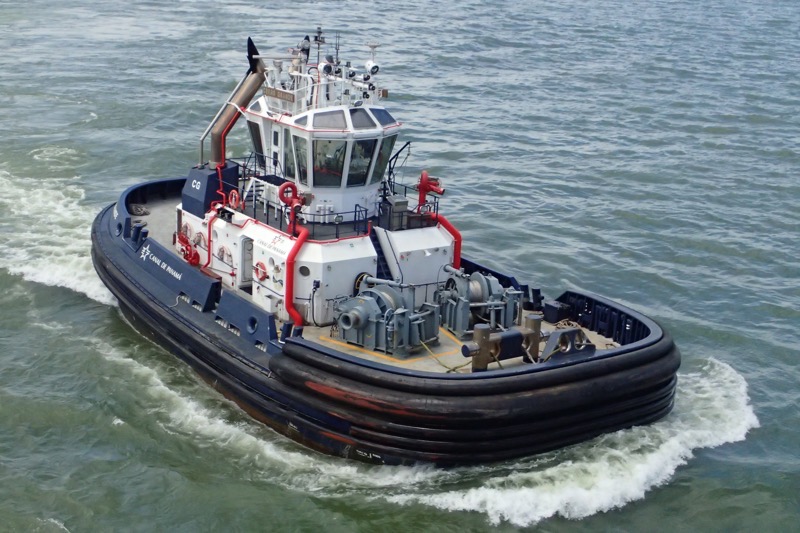
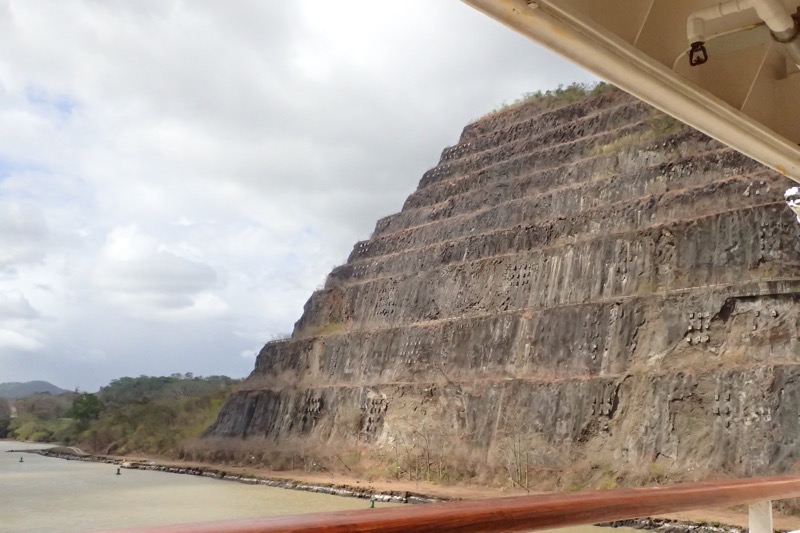
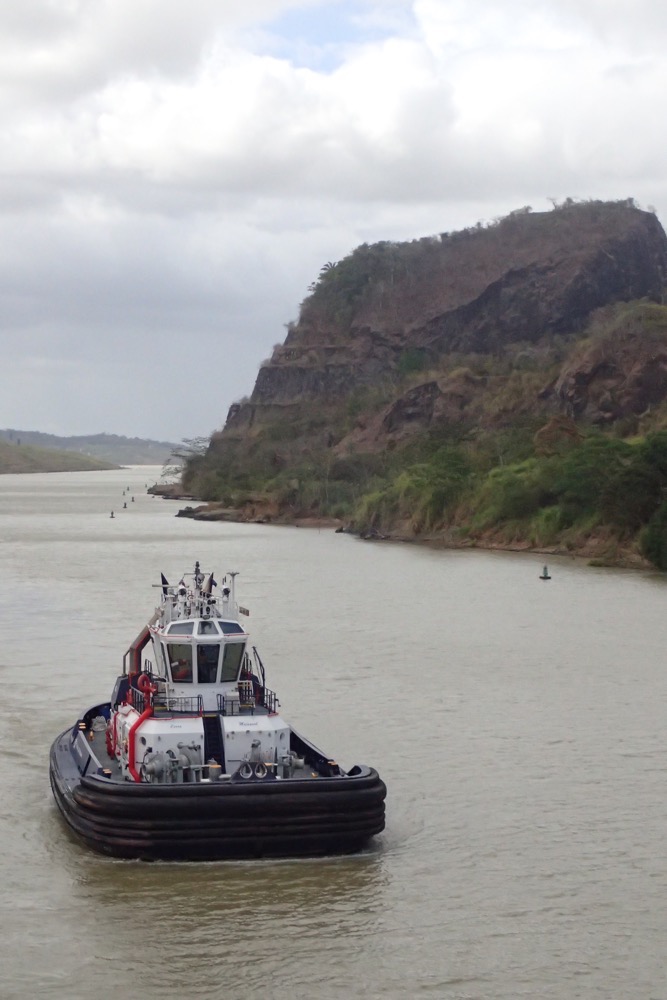 The Centennial Bridge
The Centennial Bridge 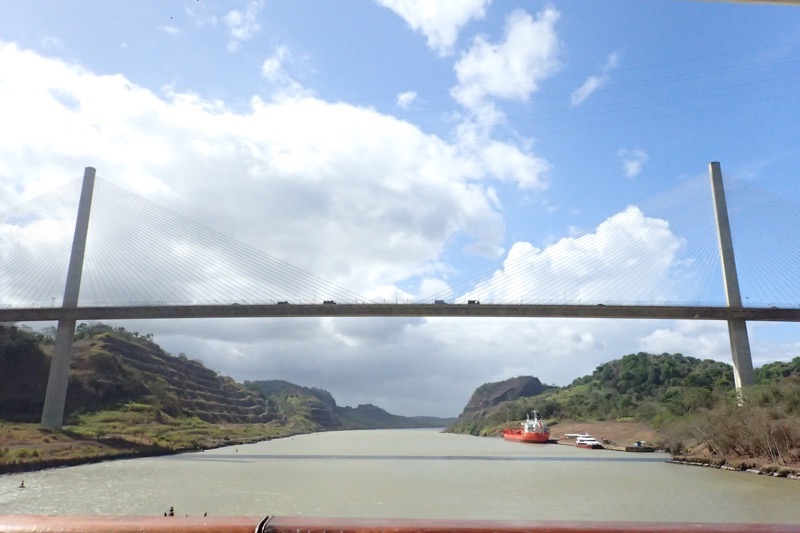
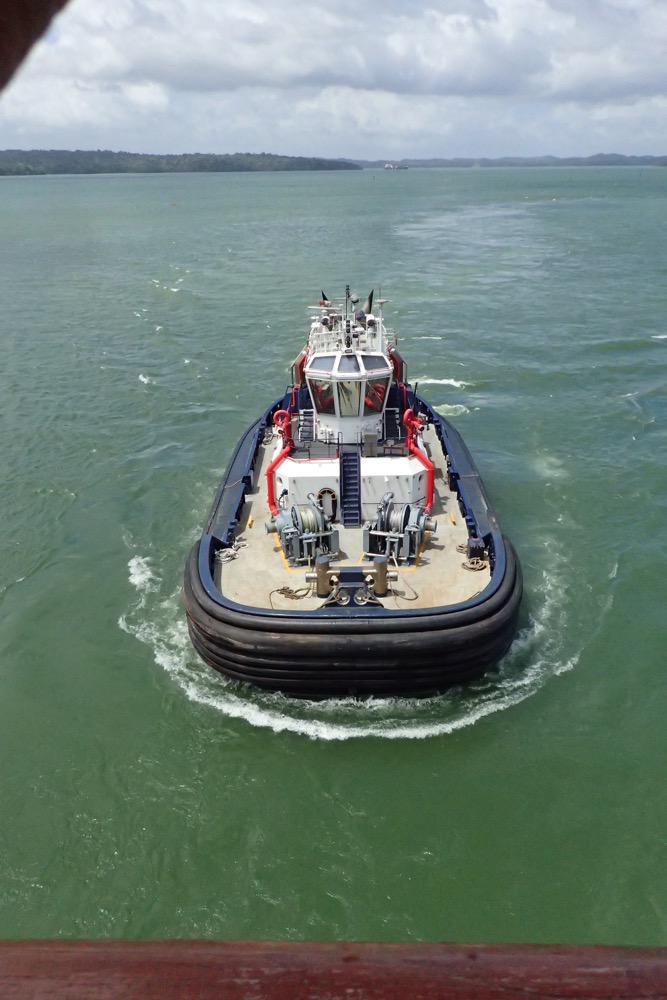 Out the other side of Gamboa we found ourselves going through the Pedro Miguel Locks and then the Mira Flores Locks. I was back on the front of the ship on the deck 11 view deck to see this – you can really see the water levels moving up and down to move these enormous ships – our cruise ship and the car carrier that we had been moving neck and neck with all day.
Out the other side of Gamboa we found ourselves going through the Pedro Miguel Locks and then the Mira Flores Locks. I was back on the front of the ship on the deck 11 view deck to see this – you can really see the water levels moving up and down to move these enormous ships – our cruise ship and the car carrier that we had been moving neck and neck with all day. 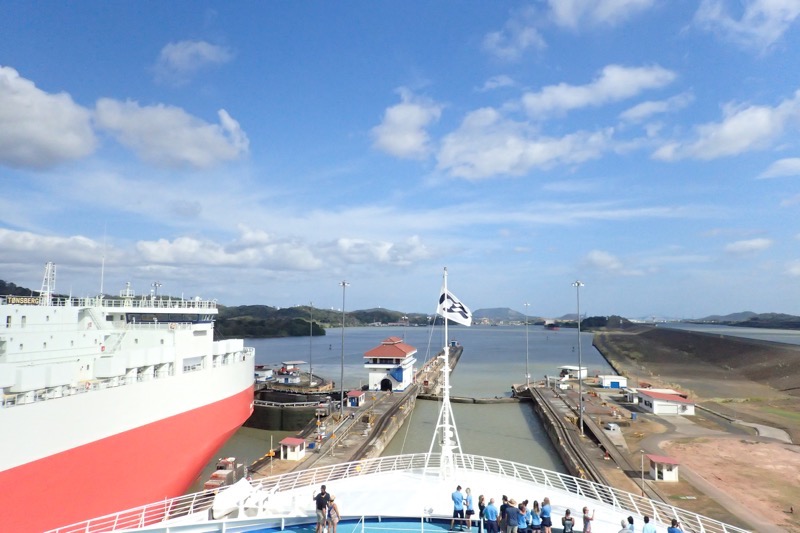
 The other interesting thing we learned today was the cost of using the Canal. The tolls are set by the Panama Canal Authority and are based on the type of ship and what type of cargo it may be carrying. For examples, container cargo ships are assessed on a unit of measurement called a ‘twenty-foot equivalent unit’ TEU, which is roughly the size of a regular shipping container. From last year, the toll was about USD$90 per TEU… which doesn’t sound too much until you consider the average Panamax container ship can take over 4000 TEU. Passenger cruise ships are calculated differently – a cruise ship of over 30,000 tonnes is charged based on the number of berths on the ship/the number of passengers that can fit on the ship, not necessarily the number of passengers that are on the ship. The cost per berth as of 2016 is $111 for unoccupied berths (why?) and $138 for occupied berths. Other ships are calculated based on the amount of cubic meters of water they displace which is sounding too much by math for me.
The other interesting thing we learned today was the cost of using the Canal. The tolls are set by the Panama Canal Authority and are based on the type of ship and what type of cargo it may be carrying. For examples, container cargo ships are assessed on a unit of measurement called a ‘twenty-foot equivalent unit’ TEU, which is roughly the size of a regular shipping container. From last year, the toll was about USD$90 per TEU… which doesn’t sound too much until you consider the average Panamax container ship can take over 4000 TEU. Passenger cruise ships are calculated differently – a cruise ship of over 30,000 tonnes is charged based on the number of berths on the ship/the number of passengers that can fit on the ship, not necessarily the number of passengers that are on the ship. The cost per berth as of 2016 is $111 for unoccupied berths (why?) and $138 for occupied berths. Other ships are calculated based on the amount of cubic meters of water they displace which is sounding too much by math for me.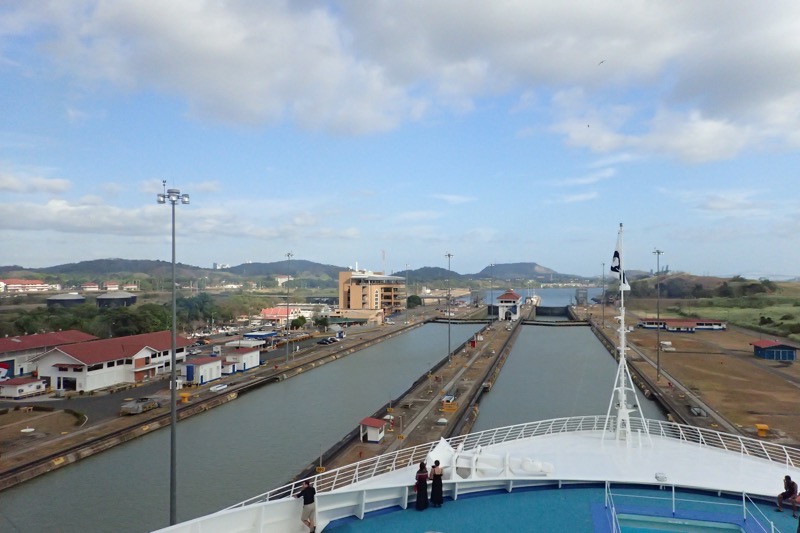 The most expensive toll ever paid was by a cruise ship called the Norwegian Pearl which paid over USD$375,000 for an expedited passage – the average cost is about $54,000 for a ship of that size, but they basically paid to jump the queue. There was another ship when work was being carried out on the Gatun Locks, an tanker I think, that once paid about $250,000 to avoid waiting in a 90 ship queue (7 days wait) on what should have been a $13,500 toll.
The most expensive toll ever paid was by a cruise ship called the Norwegian Pearl which paid over USD$375,000 for an expedited passage – the average cost is about $54,000 for a ship of that size, but they basically paid to jump the queue. There was another ship when work was being carried out on the Gatun Locks, an tanker I think, that once paid about $250,000 to avoid waiting in a 90 ship queue (7 days wait) on what should have been a $13,500 toll.
And the other bit of silliness we were told about was an eccentric American named Richard Halliburton who was charged USD$0.36 to transit the channel by swimming, and his fee was calculated based on his tonnage displacement. In the image below, you can see the water racing through a culvert… this is how the lock system works – by using gravity to move metric shit tonnes of water to allow each ship to raise and lower as required.
In the image below, you can see the water racing through a culvert… this is how the lock system works – by using gravity to move metric shit tonnes of water to allow each ship to raise and lower as required.
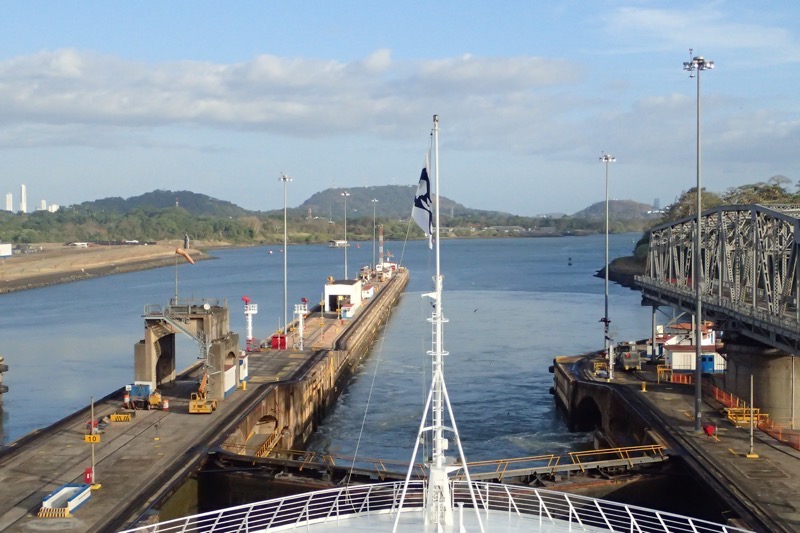

 Currently, the canal is handling far more traffic than had ever been projected by the original engineers – it was estimated that it would move about 80 million tonnes of cargo each year, but in 2015, over 340 million tonnes was moved through the canal… I gotta ask myself, how much of the stuff on these container ships is full of shit made in China destined for $2 stores the world over? Are we overdoing this moving crap around the world thing? Something to think about…
Currently, the canal is handling far more traffic than had ever been projected by the original engineers – it was estimated that it would move about 80 million tonnes of cargo each year, but in 2015, over 340 million tonnes was moved through the canal… I gotta ask myself, how much of the stuff on these container ships is full of shit made in China destined for $2 stores the world over? Are we overdoing this moving crap around the world thing? Something to think about…
Anyway to overcome the capacity issues, they are implementing better lighting so the canal can work more efficiently at night. They are widening some sections, improving the tugboat fleets, deepening the draft (which is currently only 10.5m) and generally updating the entire system, along with the parallel Post Panamax sized canal.
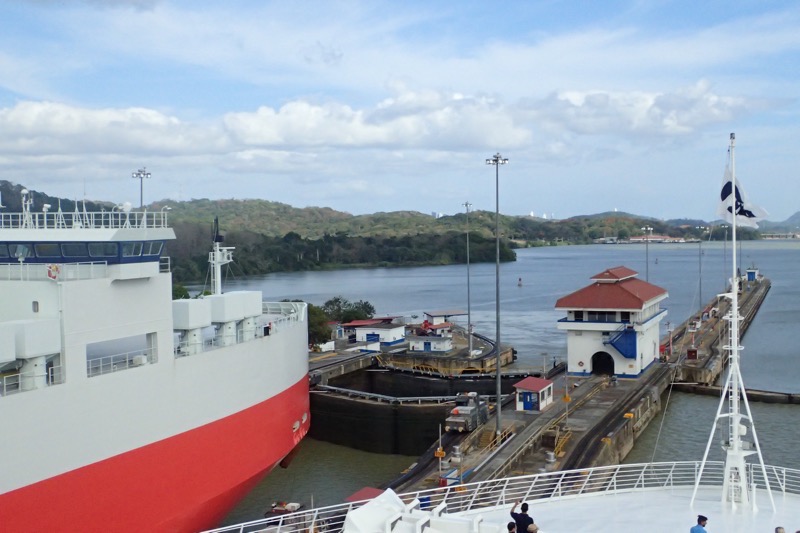 The rolling bumpers that allow the ship to move through the canal without damage – with barely a 1 foot clearance these rollers keep the ship from rubbing along the canal’s concrete edges.
The rolling bumpers that allow the ship to move through the canal without damage – with barely a 1 foot clearance these rollers keep the ship from rubbing along the canal’s concrete edges.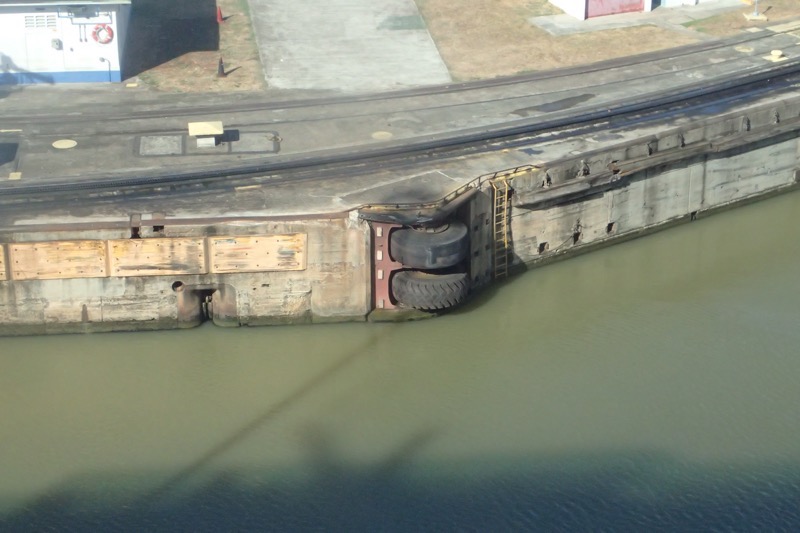 In the old days, mules were used to pull ships through the canal – today ‘mules’ are still used to pull the ships through and help keep their sideways movement controlled. Only now they are 50 tonne machines made by (originally General Electric) and Mitsubishi now. Six of these are attached to the ship for the transit, and believe it or not the cables are sent out to the ship at the beginning of any transit by two little guys in a row boat who then pass them to a crew member on the ship who has gone out a watertight door and down a rope ladder to ‘catch’ it! Many different methods of throwing and/or shooting the cables to the ship have been tried in the past, but the little guys in the row boats have proved most effective over time.
In the old days, mules were used to pull ships through the canal – today ‘mules’ are still used to pull the ships through and help keep their sideways movement controlled. Only now they are 50 tonne machines made by (originally General Electric) and Mitsubishi now. Six of these are attached to the ship for the transit, and believe it or not the cables are sent out to the ship at the beginning of any transit by two little guys in a row boat who then pass them to a crew member on the ship who has gone out a watertight door and down a rope ladder to ‘catch’ it! Many different methods of throwing and/or shooting the cables to the ship have been tried in the past, but the little guys in the row boats have proved most effective over time.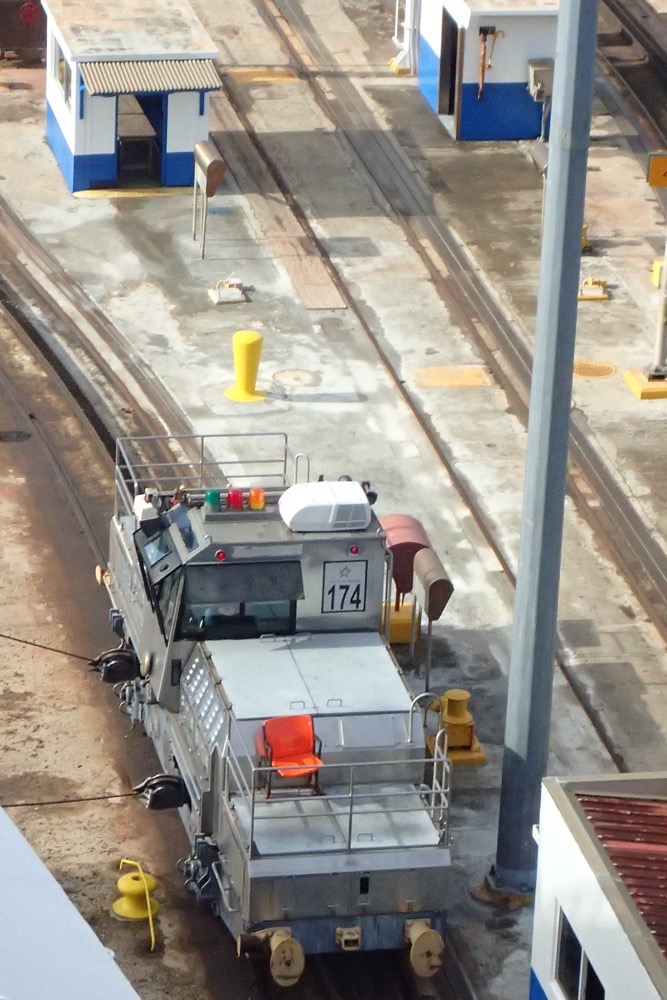 Mules…
Mules…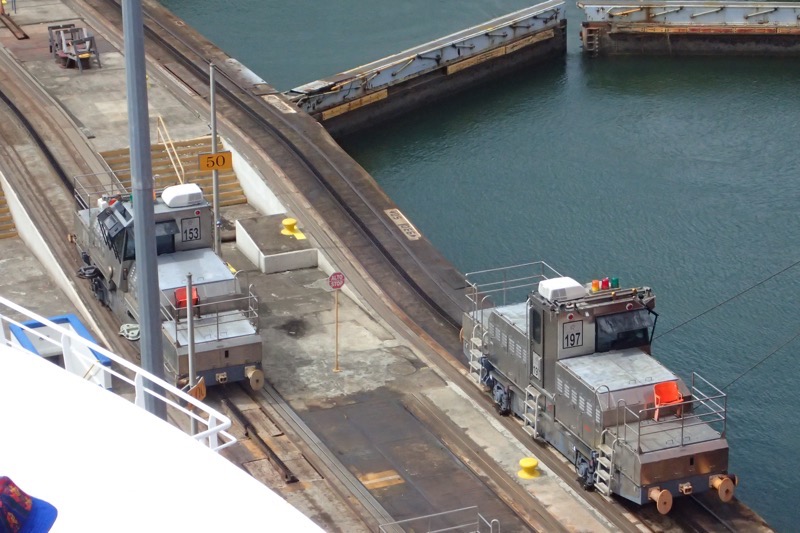 Heading out the other side you can see the large port infrastructure at the other end of the Panama Railway… large cranes dot the skyline to unload/reload ships that are not traversing through the canal.
Heading out the other side you can see the large port infrastructure at the other end of the Panama Railway… large cranes dot the skyline to unload/reload ships that are not traversing through the canal.
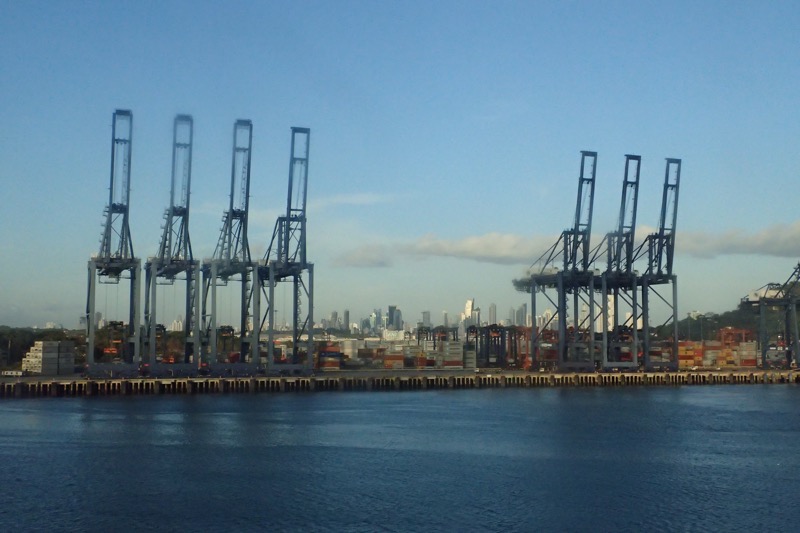 Elaine and Anyse enjoying the view from the Deck 10 forward viewing deck.
Elaine and Anyse enjoying the view from the Deck 10 forward viewing deck.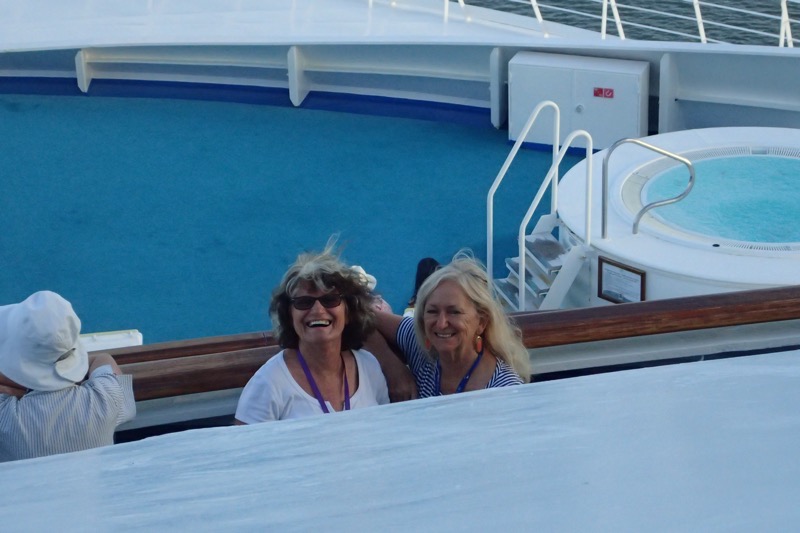 And then, before you know it… ta-da! We are back in the Pacific Ocean, and well, you know – we could swim home from here, right? 😉
And then, before you know it… ta-da! We are back in the Pacific Ocean, and well, you know – we could swim home from here, right? 😉 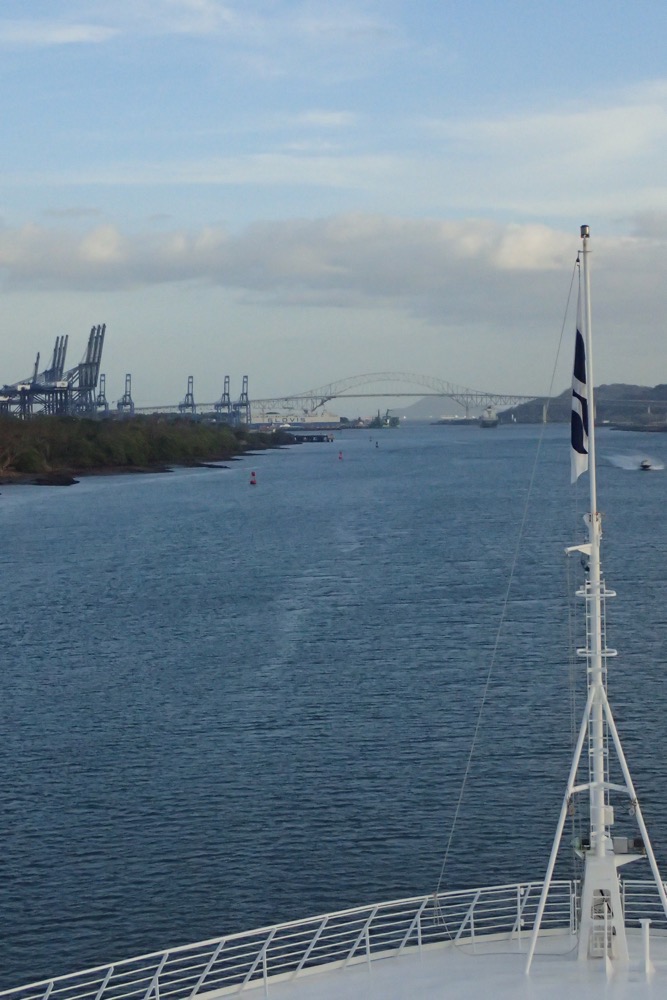

 Our first stop in Cartagena today was up the mountain that overlooks the city, to La Popa Monastery. The monastery was built in the 17th century and it continues to houses a community of Augustinian monks today. On the way up the mountain were markers for the traditional Catholic Stations of the Cross, however there are 14 of them, and from my heavily indoctrinated Catholic school recollections there was only ever 12… Mercedes was unable to explain away the extra stations, so I guess that one will remain a mystery.
Our first stop in Cartagena today was up the mountain that overlooks the city, to La Popa Monastery. The monastery was built in the 17th century and it continues to houses a community of Augustinian monks today. On the way up the mountain were markers for the traditional Catholic Stations of the Cross, however there are 14 of them, and from my heavily indoctrinated Catholic school recollections there was only ever 12… Mercedes was unable to explain away the extra stations, so I guess that one will remain a mystery. The view over Cartagena.
The view over Cartagena.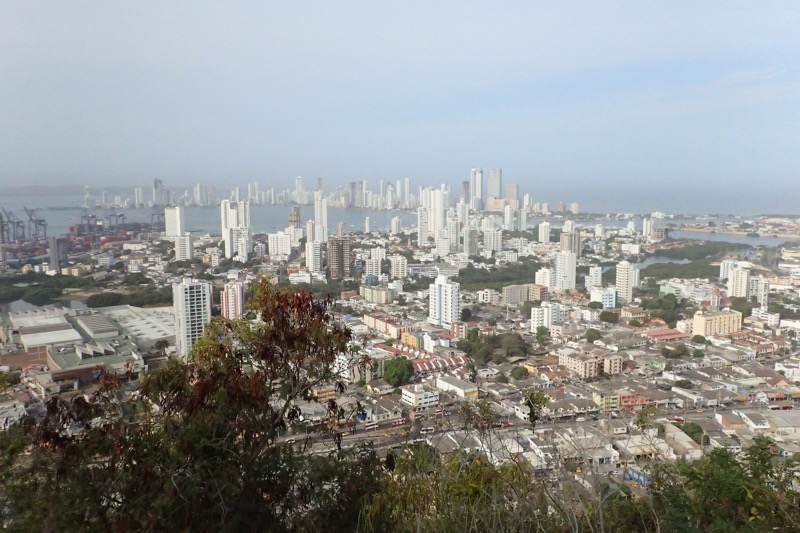 Steps up to La Popa.
Steps up to La Popa.

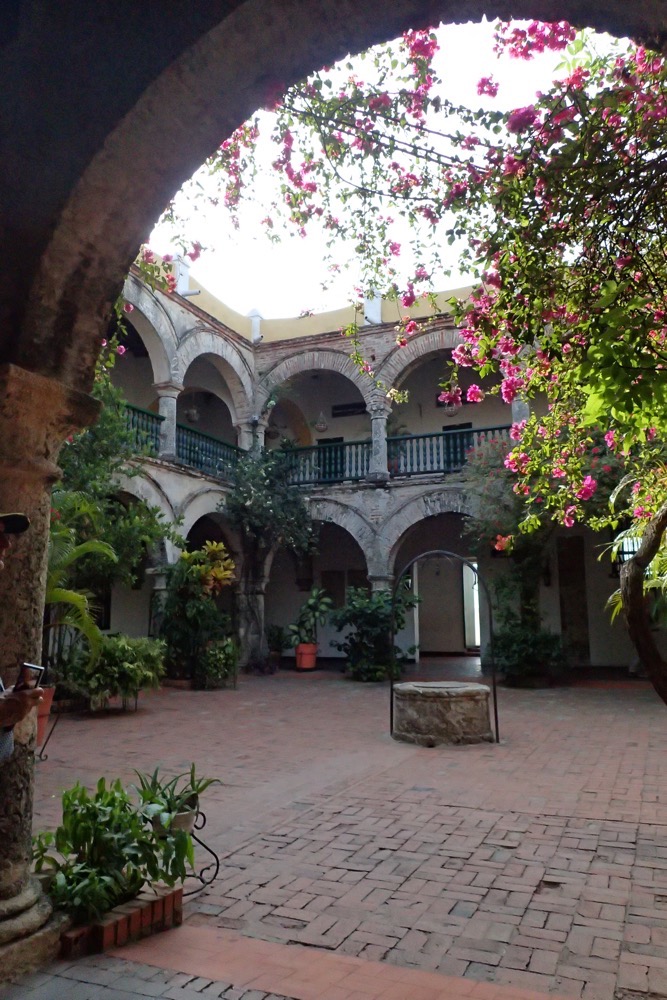 This lovely cloistered courtyard has been cleverly designed to capture rainwater and funnel it to an enormous underground water cistern… the pillars of the courtyard are hollow, and water flows down through the pillars into the cistern for later use, as the subterranean water here is too salty to use for traditional wells.
This lovely cloistered courtyard has been cleverly designed to capture rainwater and funnel it to an enormous underground water cistern… the pillars of the courtyard are hollow, and water flows down through the pillars into the cistern for later use, as the subterranean water here is too salty to use for traditional wells.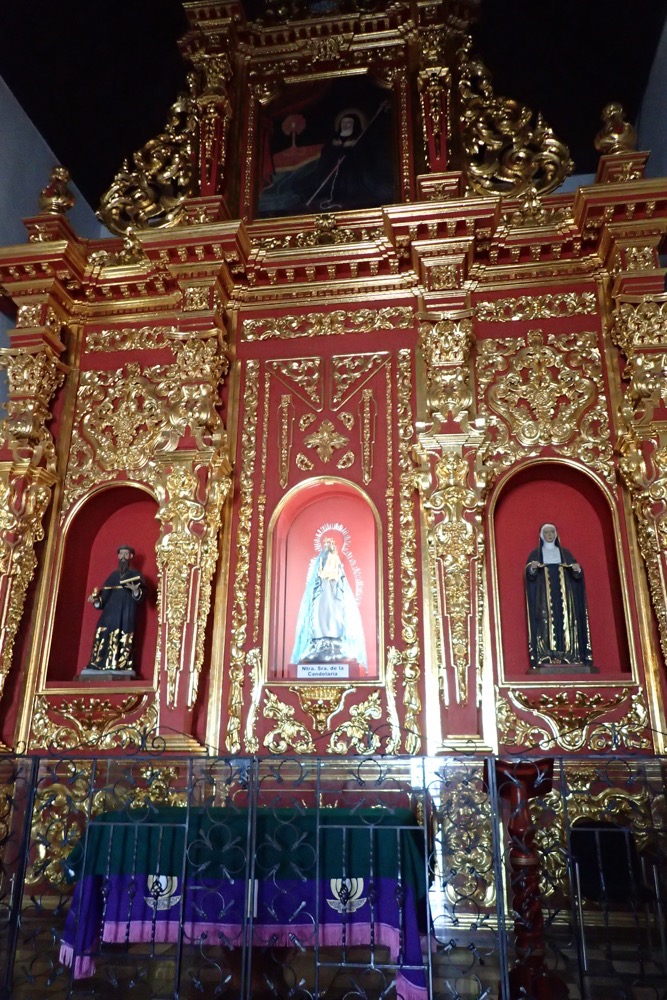 Every year wealthy local women make the Madonna new clothing and there is a room here dedicated to her old clothes. At first the garments looked very impressive, but on closer inspection, it was evident that most of the embroidery was done by machine so I didn’t even bother taking a photo of any of it. #embroiderysnobs
Every year wealthy local women make the Madonna new clothing and there is a room here dedicated to her old clothes. At first the garments looked very impressive, but on closer inspection, it was evident that most of the embroidery was done by machine so I didn’t even bother taking a photo of any of it. #embroiderysnobs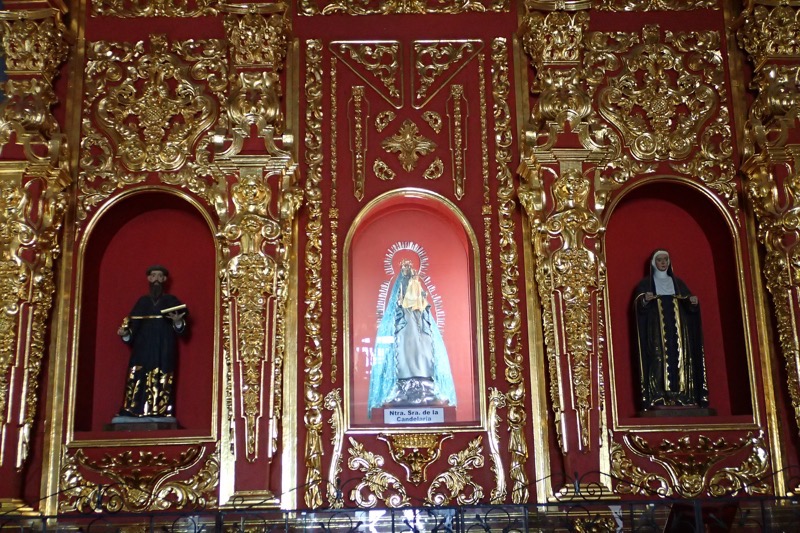 There is a story here that the local pagan Karib and Calamari Indian people worshiped Buziraco, the devil, in the form of a golden goat, and the friar who wanted to build the monastery and the shrine to La Virgen de la Candelaria confronted the devil and his worshippers by throwing the golden goat off the side of the mountain. The devil retaliated with hurricanes and storms until the church was completed, at which point the devil relented and moved deeper into the continent of South America leaving Cartagena alone. The city actually experiences no storms, no earthquakes, and no hurricanes of any sort. This weird diorama at the monastery depicts the native indians worshipping their golden goat… Mercedes, our guide, told us this story was highly unlikely, stating: “Who ever heard of a Catholic priest throwing away gold?”
There is a story here that the local pagan Karib and Calamari Indian people worshiped Buziraco, the devil, in the form of a golden goat, and the friar who wanted to build the monastery and the shrine to La Virgen de la Candelaria confronted the devil and his worshippers by throwing the golden goat off the side of the mountain. The devil retaliated with hurricanes and storms until the church was completed, at which point the devil relented and moved deeper into the continent of South America leaving Cartagena alone. The city actually experiences no storms, no earthquakes, and no hurricanes of any sort. This weird diorama at the monastery depicts the native indians worshipping their golden goat… Mercedes, our guide, told us this story was highly unlikely, stating: “Who ever heard of a Catholic priest throwing away gold?”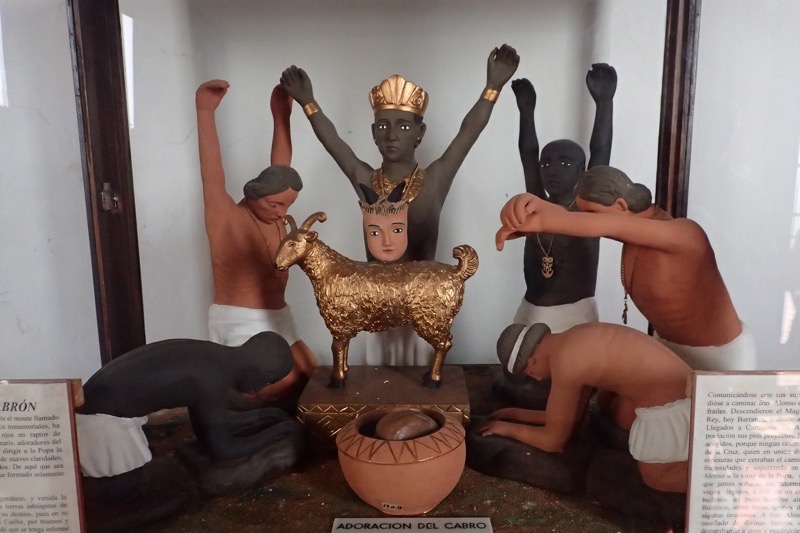
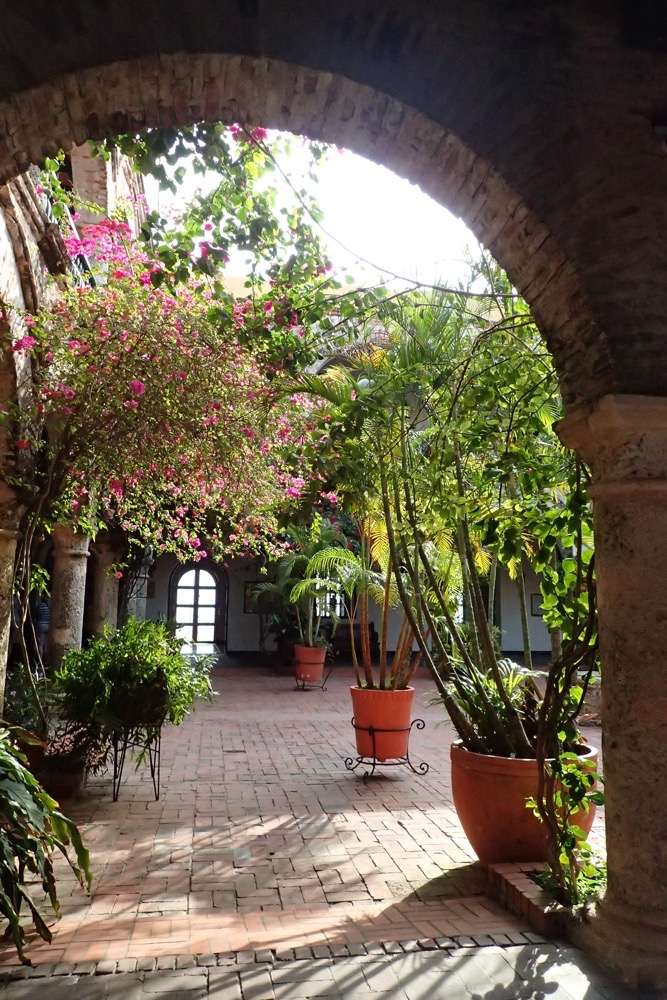
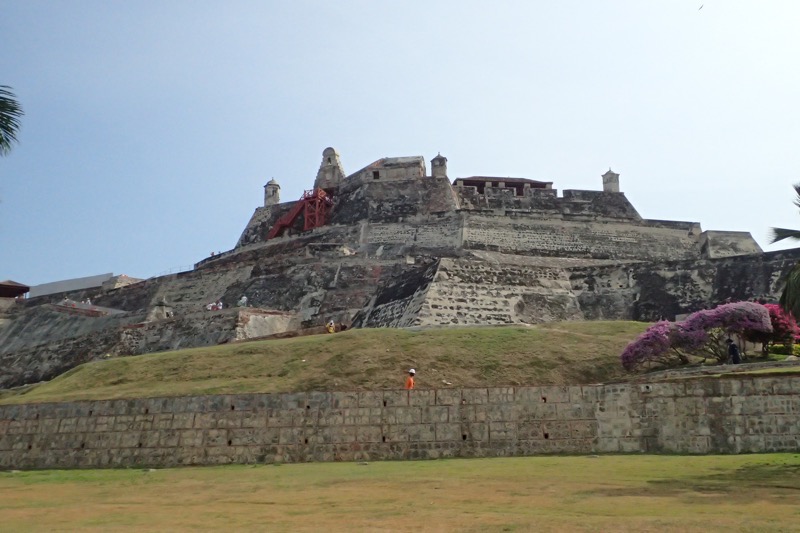

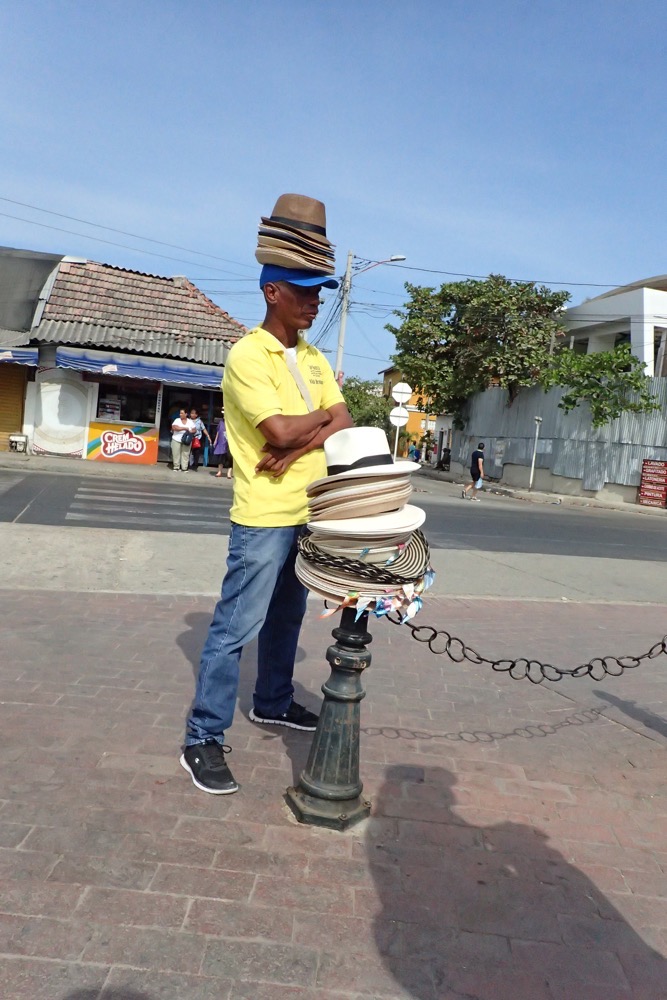
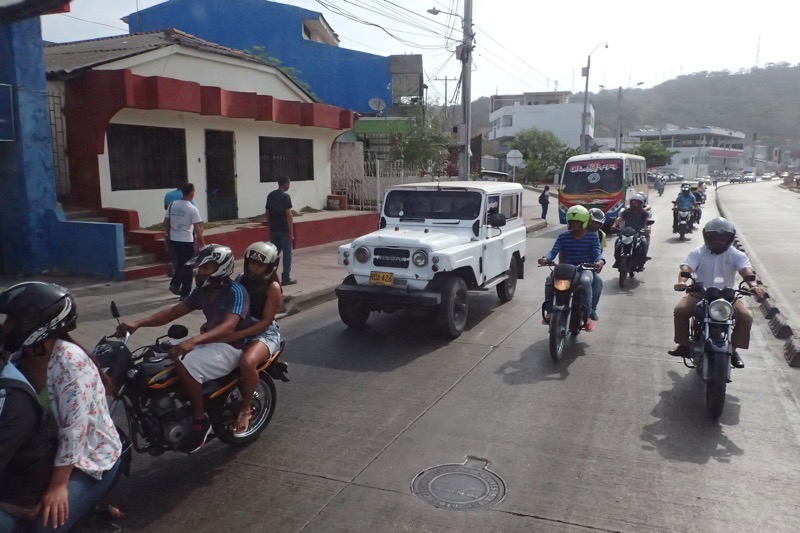 Oh, and nostalgically, I must have seen about 20 old G60 Nissan Patrols today. 🙂 Quite unexpected and not sure why, but they seemed to be everywhere, when you never see them at home anymore. The G60 seems to be an old work horse of choice here and it was lots of fun spotting them in the traffic. BigSal and Trish will recognise them from the air vents under the front windscreen 🙂
Oh, and nostalgically, I must have seen about 20 old G60 Nissan Patrols today. 🙂 Quite unexpected and not sure why, but they seemed to be everywhere, when you never see them at home anymore. The G60 seems to be an old work horse of choice here and it was lots of fun spotting them in the traffic. BigSal and Trish will recognise them from the air vents under the front windscreen 🙂 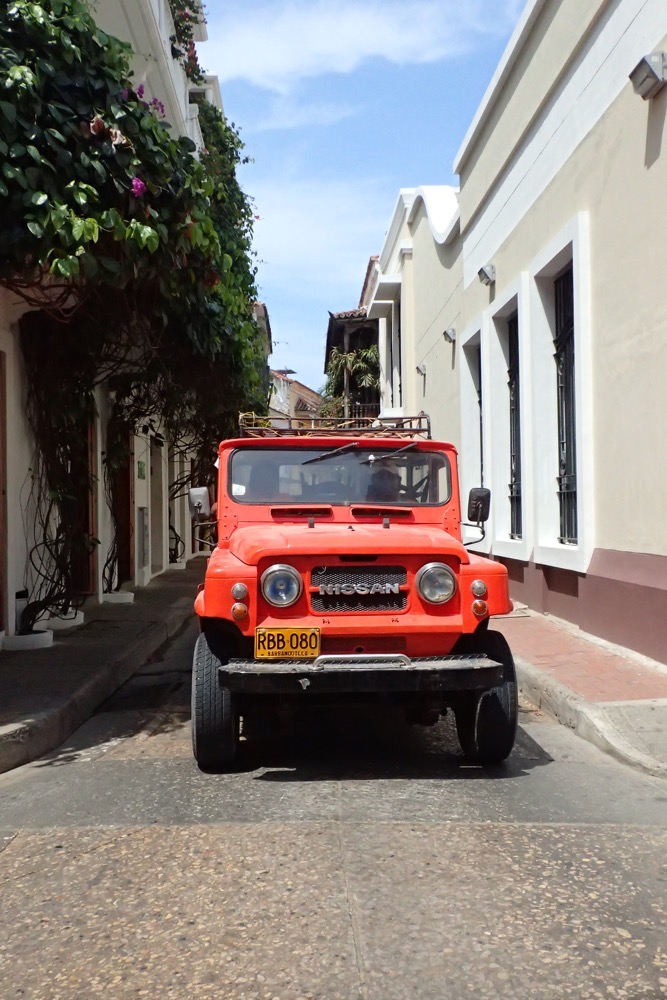
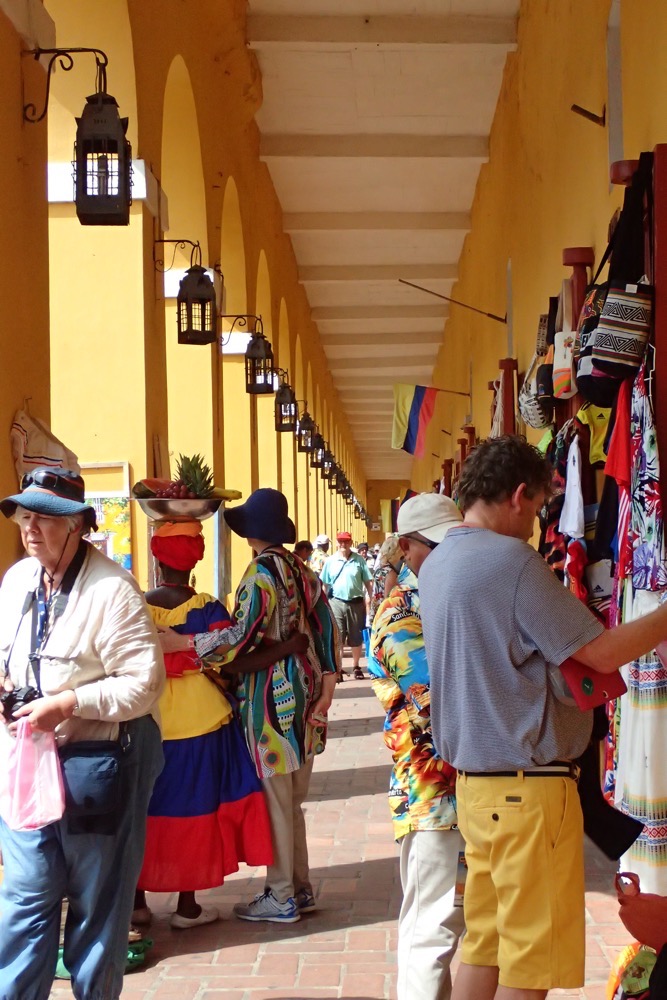 Shopping is a very happy, colourful experience here, excepting where the ladies in the traditional dresses kept coming up to us, and draping their arms around us saying we could take pictures with them and their fruitbaskets for $1. I don’t mind them making money in this way – but please don’t bump into or touch me while I am in a strange country… it makes me immediately do a complete audit of all my pockets and my bag to ensure I still have my wallet and my camera! When playing tourist in a place like Columbia (or Rio or Buenos Aires), you are already on high alert for pickpockets without people touching and bumping into you deliberately. :/
Shopping is a very happy, colourful experience here, excepting where the ladies in the traditional dresses kept coming up to us, and draping their arms around us saying we could take pictures with them and their fruitbaskets for $1. I don’t mind them making money in this way – but please don’t bump into or touch me while I am in a strange country… it makes me immediately do a complete audit of all my pockets and my bag to ensure I still have my wallet and my camera! When playing tourist in a place like Columbia (or Rio or Buenos Aires), you are already on high alert for pickpockets without people touching and bumping into you deliberately. :/ 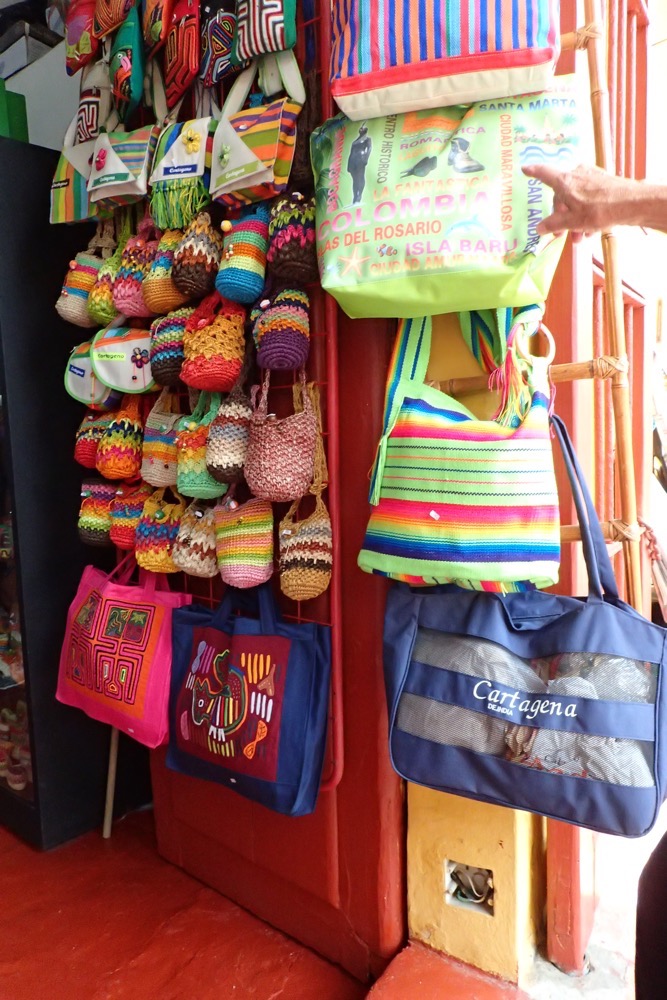 All the souvenirs are crazy colourful.
All the souvenirs are crazy colourful.

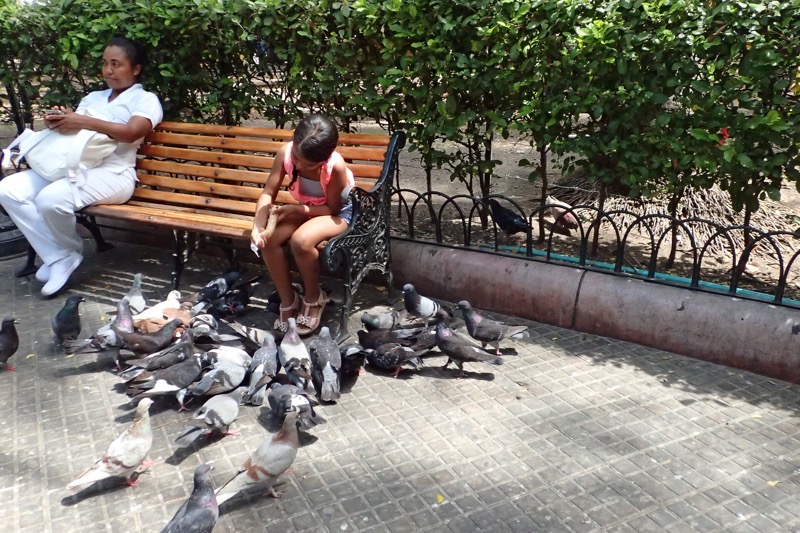 In the town centre is the Historical Museum of Cartagena, which has an impressive colonial facade from the palace museum. The facade stems from the period of the Spanish Inquisition, which of course, no one expected.
In the town centre is the Historical Museum of Cartagena, which has an impressive colonial facade from the palace museum. The facade stems from the period of the Spanish Inquisition, which of course, no one expected.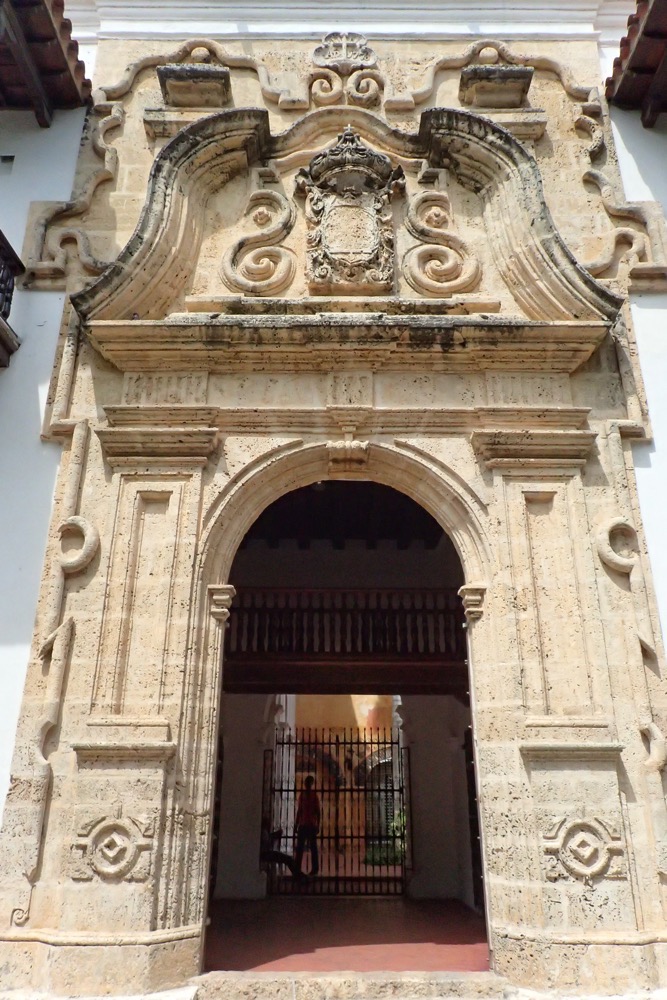 And the museum itself houses many torture instruments that the inquisition used with great creative effect… we did not have time to go through the museum unfortunately, though I heard from one of my dining companions who did go through the museum, that one was able to have their torture put onto a proxy for the right price. Yes, somehow it was acceptable to the Inquisitors to torture the slave of an intended torturee (for a sturdy donation, of course), and that slave recanting on behalf of his owner was sufficient for these sadistic priests!
And the museum itself houses many torture instruments that the inquisition used with great creative effect… we did not have time to go through the museum unfortunately, though I heard from one of my dining companions who did go through the museum, that one was able to have their torture put onto a proxy for the right price. Yes, somehow it was acceptable to the Inquisitors to torture the slave of an intended torturee (for a sturdy donation, of course), and that slave recanting on behalf of his owner was sufficient for these sadistic priests!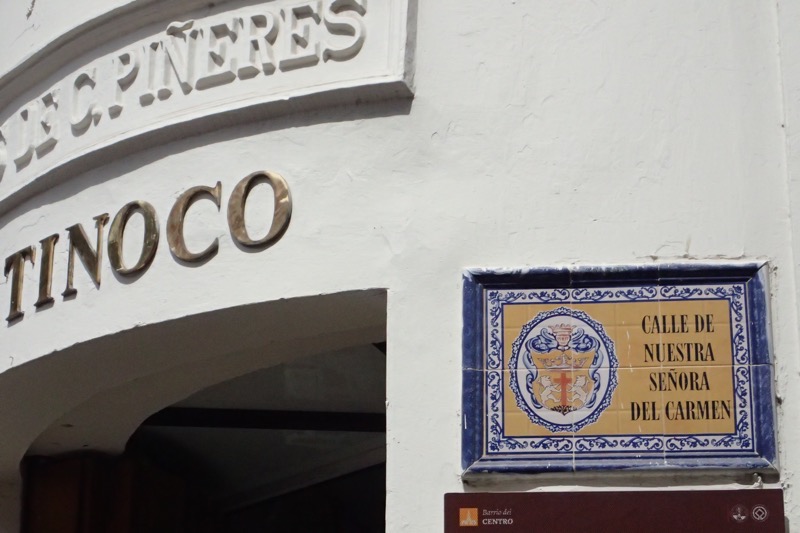 The Old City is the walled historic centre of Cartagena, which (like everything else in South America) has been listed as a UNESCO World Heritage Site. It is full of winding streets and bright colourfully painted Spanish colonial architecture. Mercedes informs us here that many of the old private homes are now all used as hotels, bars and restaurants. The homes were built to house large Catholic merchant families where it was not uncommon to have 10-15 children. The downstairs of the house would be for work, trading, selling etc., the mezzanine floor would be used to house guests – as it took 55 days to sail from Spain to Cartagena, people would come and visit for extended periods of time, so most wealthy homes had space for semi-permanent guests. The upstairs of the house would accommodate the actual family, so big enough for 10-15 people. You can see the small balconies of the mezzanine ‘guest’ floors, under the main balconies upstairs for the family.
The Old City is the walled historic centre of Cartagena, which (like everything else in South America) has been listed as a UNESCO World Heritage Site. It is full of winding streets and bright colourfully painted Spanish colonial architecture. Mercedes informs us here that many of the old private homes are now all used as hotels, bars and restaurants. The homes were built to house large Catholic merchant families where it was not uncommon to have 10-15 children. The downstairs of the house would be for work, trading, selling etc., the mezzanine floor would be used to house guests – as it took 55 days to sail from Spain to Cartagena, people would come and visit for extended periods of time, so most wealthy homes had space for semi-permanent guests. The upstairs of the house would accommodate the actual family, so big enough for 10-15 people. You can see the small balconies of the mezzanine ‘guest’ floors, under the main balconies upstairs for the family.
 Many of these old buildings have these mezzanine balconies, original slate and stone floors, and original brickwork from the 16th – 17thC. Absolutely beautiful.
Many of these old buildings have these mezzanine balconies, original slate and stone floors, and original brickwork from the 16th – 17thC. Absolutely beautiful.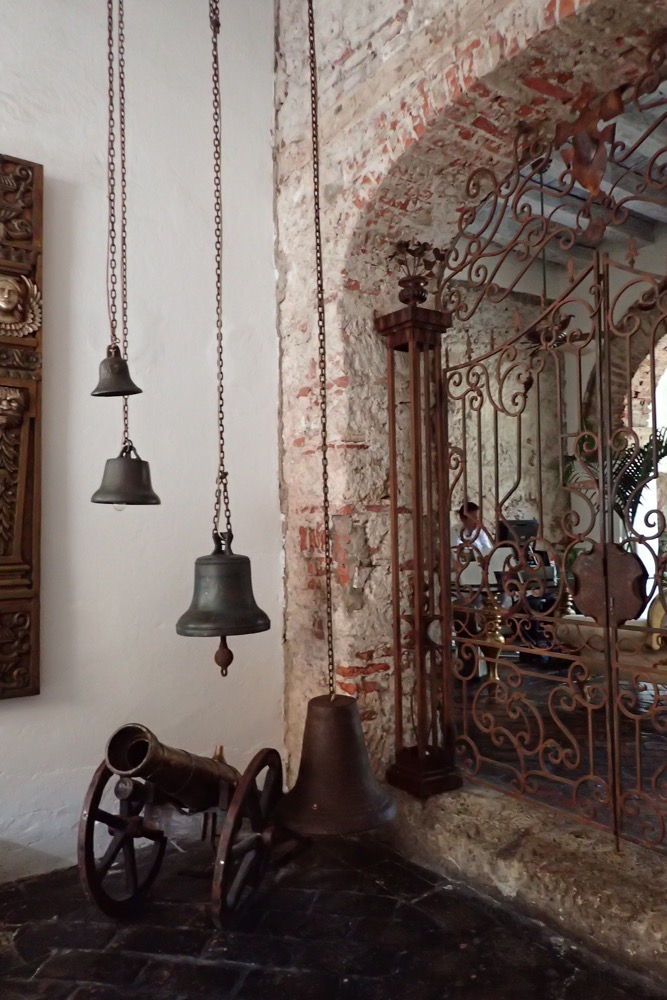


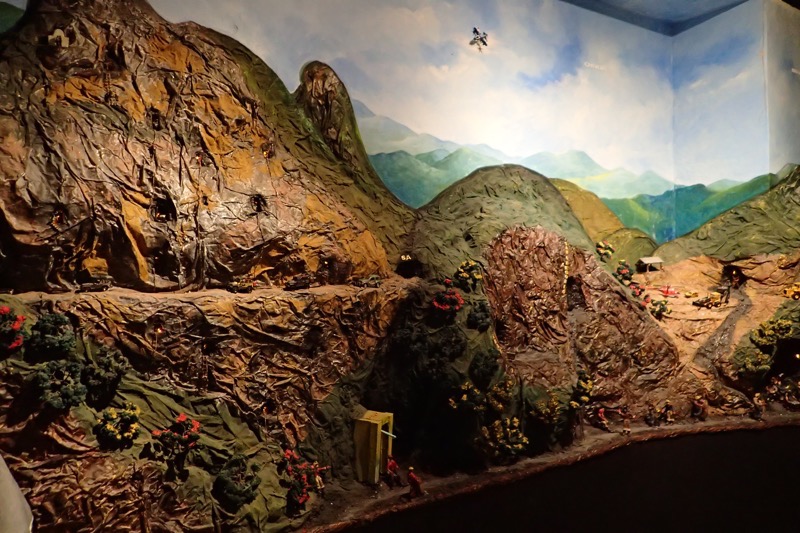
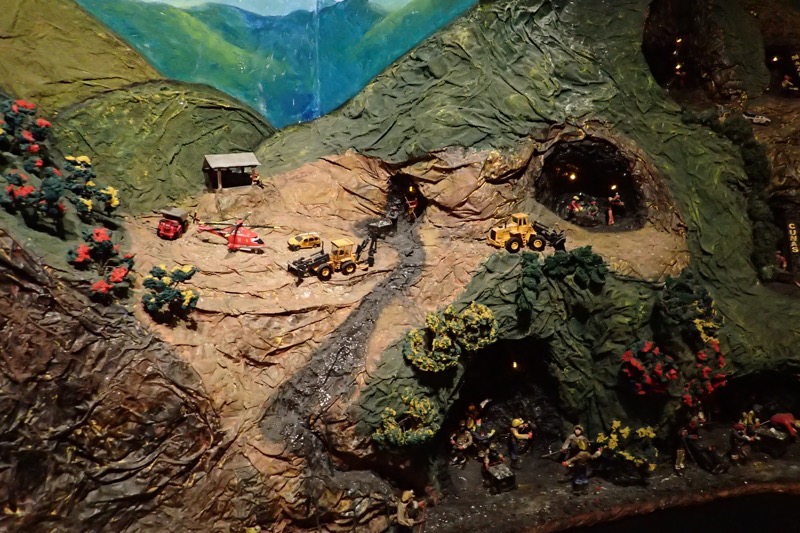 A diorama depicting the El Dorado Ceremony – “When the Muisca chief passed away, his nephew was acknowledged as the new chief by this people. During a ceremony priests undressed the chief and anointed him with a viscous mixture of soil and gold powder. Then the chief would get on a raft with large amounts of gold and emeralds at his feet. Other chiefs decked with feathers, crowns, armlets, pendants etc carried an offering and sat on the raft. As soon as the raft left the edge of the water, whistles, trumpets flutes and songs would play until the raft reached the centre of the lake. The chief would throw himself into the water with his offerings and the rafter would go back to honour the new heir who was now recognised as the chief and prince.” Not sure what is happening there? Does the nephew get sacrificed for the actual son of the chief to take his place?
A diorama depicting the El Dorado Ceremony – “When the Muisca chief passed away, his nephew was acknowledged as the new chief by this people. During a ceremony priests undressed the chief and anointed him with a viscous mixture of soil and gold powder. Then the chief would get on a raft with large amounts of gold and emeralds at his feet. Other chiefs decked with feathers, crowns, armlets, pendants etc carried an offering and sat on the raft. As soon as the raft left the edge of the water, whistles, trumpets flutes and songs would play until the raft reached the centre of the lake. The chief would throw himself into the water with his offerings and the rafter would go back to honour the new heir who was now recognised as the chief and prince.” Not sure what is happening there? Does the nephew get sacrificed for the actual son of the chief to take his place?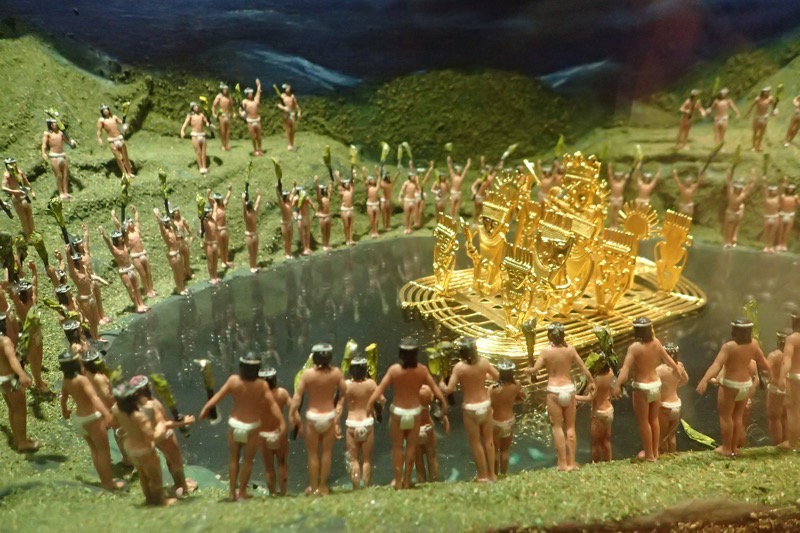 The ‘museum’ continued in an equally confusing theme full of strange little dioramas…
The ‘museum’ continued in an equally confusing theme full of strange little dioramas…
 Everywhere were signs and things telling you how superior the Columbia emeralds are to those mined in other areas of the world…
Everywhere were signs and things telling you how superior the Columbia emeralds are to those mined in other areas of the world…
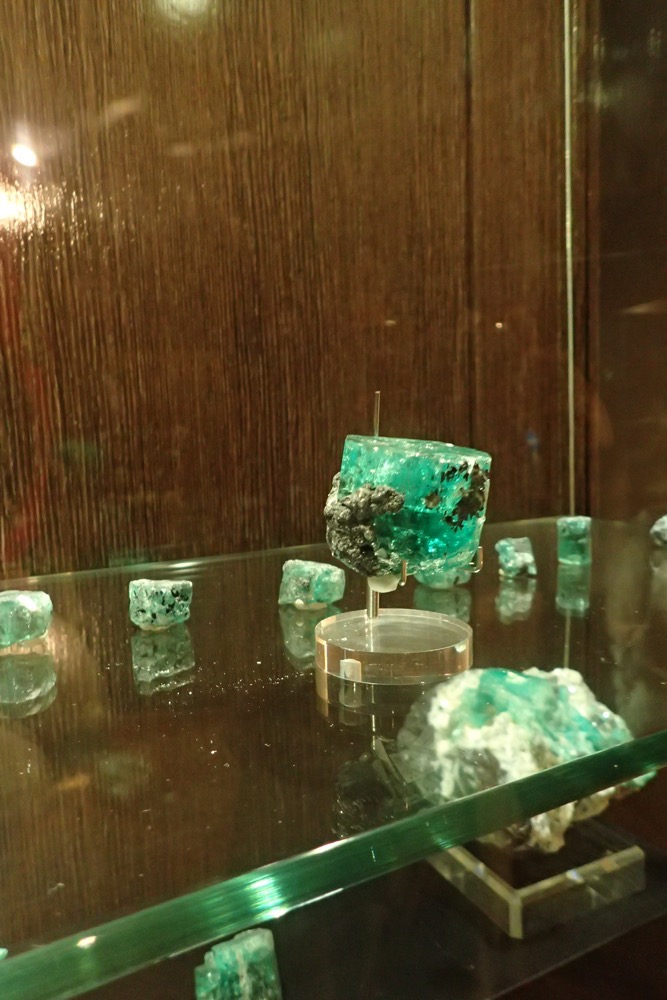 There was even a guy here hand cutting emeralds…
There was even a guy here hand cutting emeralds… 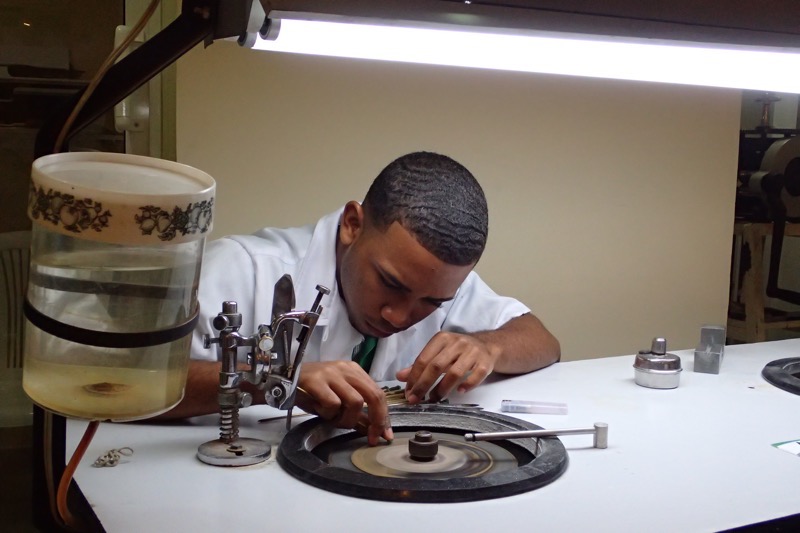

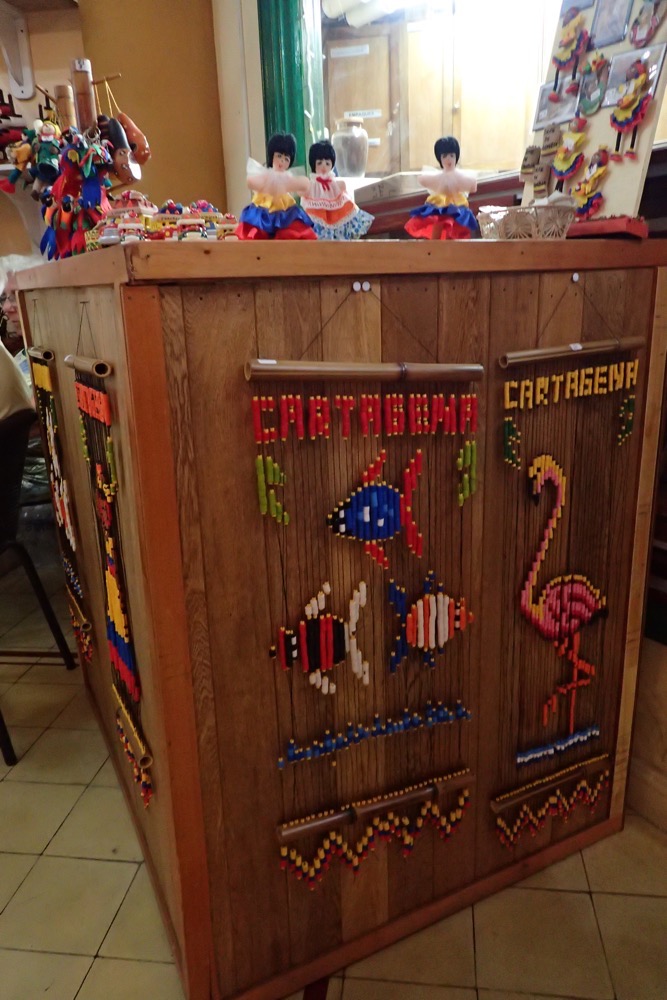
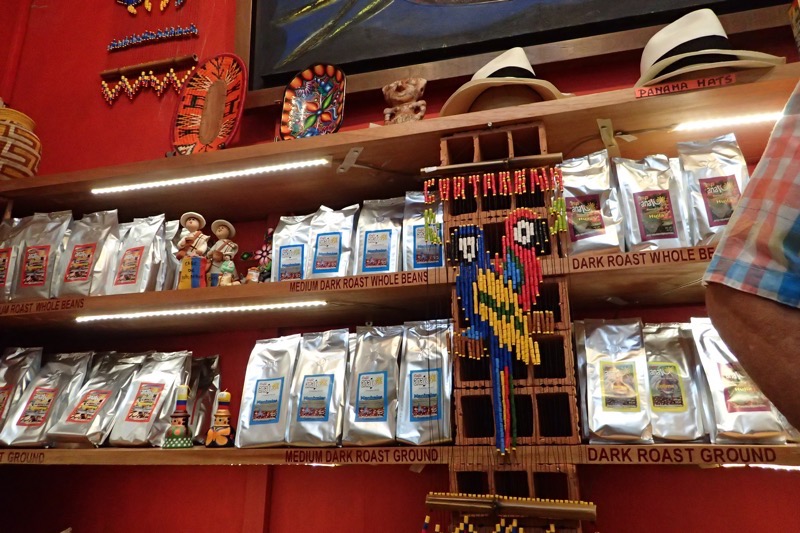 But ever being a contrary little thing – I hate coffee and don’t really like chocolate either. So I went for a wander in the streets instead of being assaulted by the coffee smells. There are lots of people selling colourful wares along the streets in the Old City. Mostly hats, coral necklaces, bags, textiles, and little wristbands that say ‘Cartagena’ seemed to be really popular – but everything is crazy colourful still.
But ever being a contrary little thing – I hate coffee and don’t really like chocolate either. So I went for a wander in the streets instead of being assaulted by the coffee smells. There are lots of people selling colourful wares along the streets in the Old City. Mostly hats, coral necklaces, bags, textiles, and little wristbands that say ‘Cartagena’ seemed to be really popular – but everything is crazy colourful still.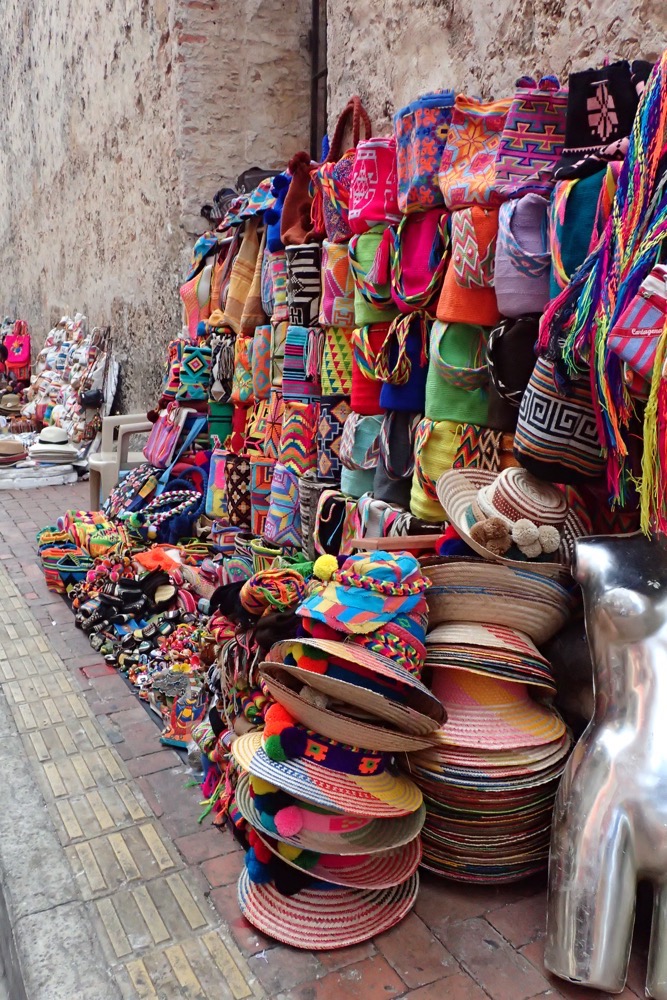
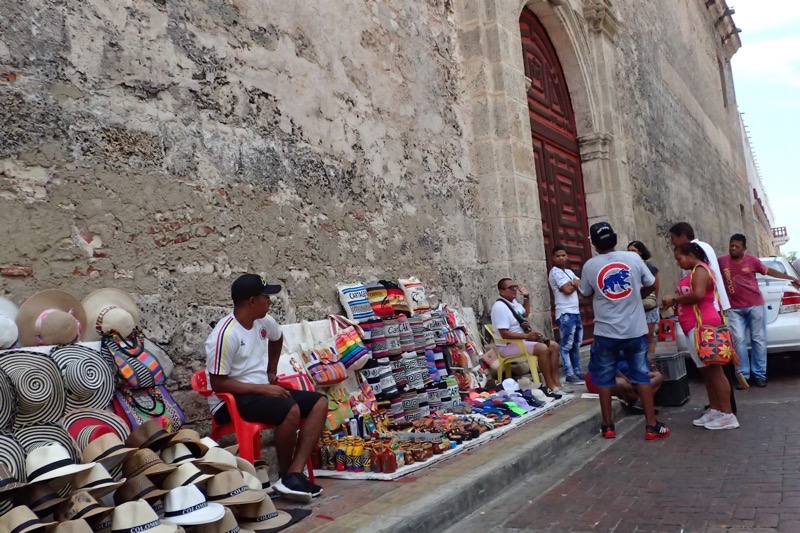 Columbia is one of the few South American countries never to be under dictatorial rule, this is in part due to the fact that members of the military are unable to vote – as we know, most dictators emerge from military coups. Military service is mandatory for 18 months for every male at 18 years of age. The only exception is where a family has a singular male child – obviously this is because if anything were to happen to that male child, there would be no ‘man in the house’ to look after the remaining family. (insert a dry futile nod to the blatant thriving patriarchy, here)
Columbia is one of the few South American countries never to be under dictatorial rule, this is in part due to the fact that members of the military are unable to vote – as we know, most dictators emerge from military coups. Military service is mandatory for 18 months for every male at 18 years of age. The only exception is where a family has a singular male child – obviously this is because if anything were to happen to that male child, there would be no ‘man in the house’ to look after the remaining family. (insert a dry futile nod to the blatant thriving patriarchy, here)
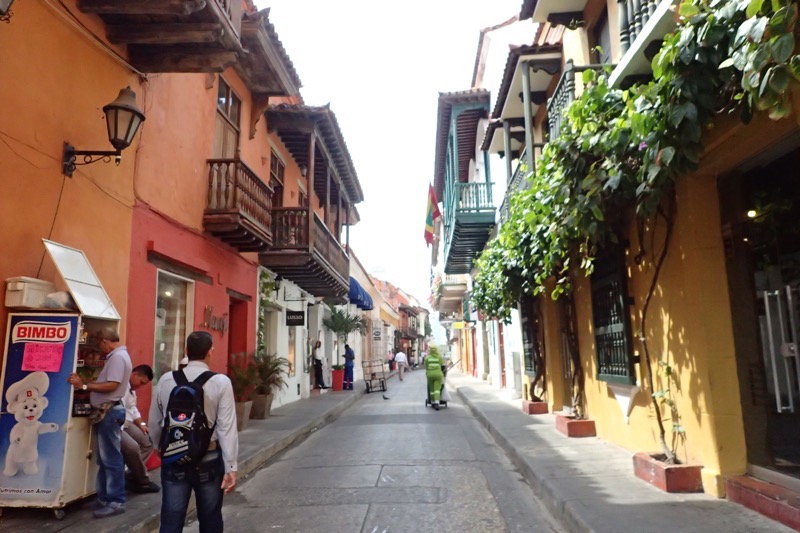
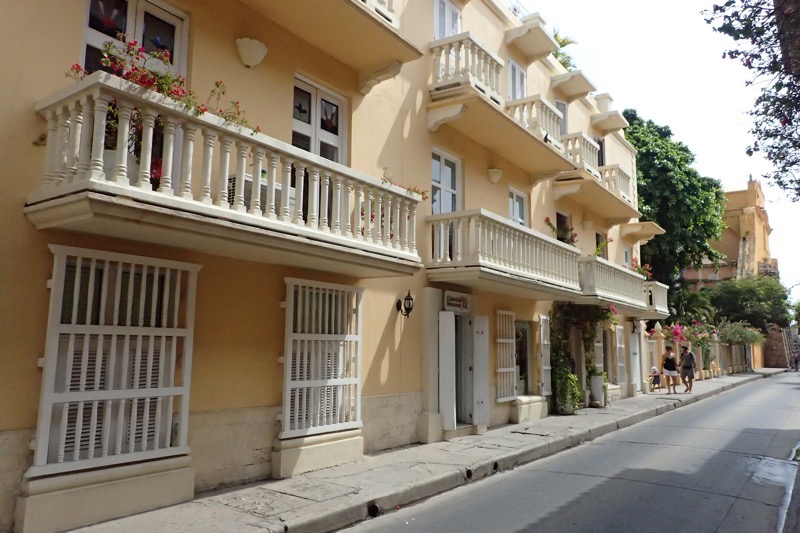
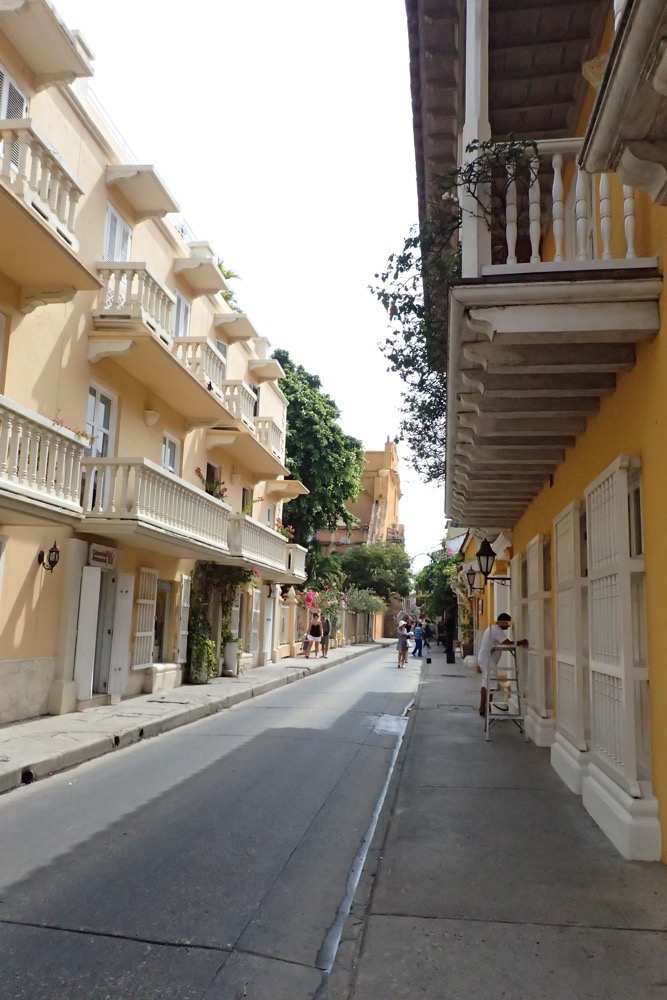
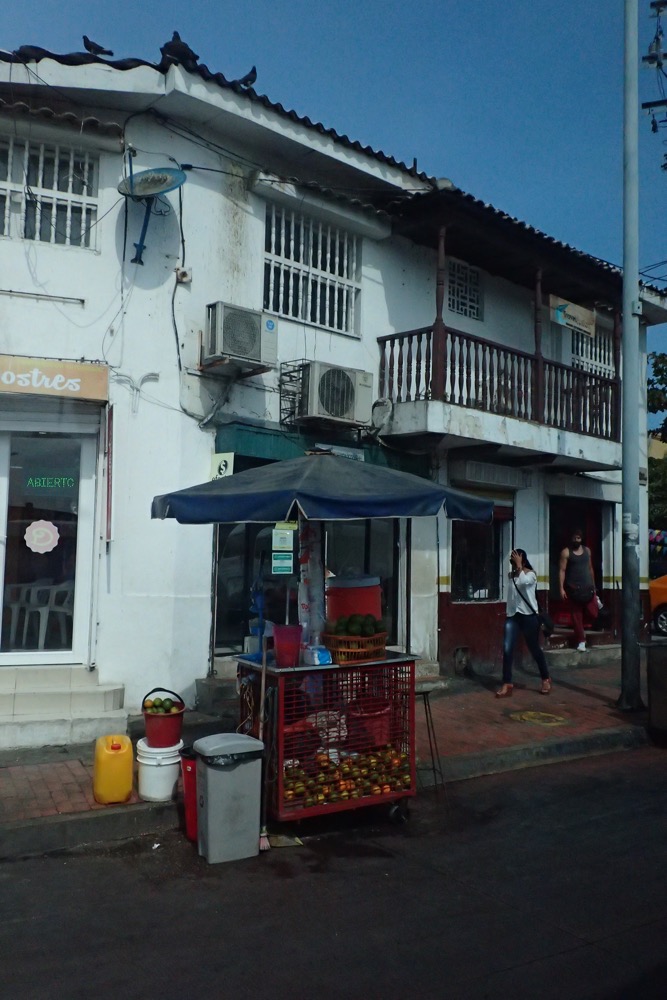 Our next visit was to the Monasterio de San Pedro Cláver, a Jesuit temple that is part of a large monastery with religious buildings that include the Cloister of San Pedro Cláver and a small archaeological museum. It was built between 1580 and 1654, and apparently the body of Saint Peter Claver is located in its main altar.
Our next visit was to the Monasterio de San Pedro Cláver, a Jesuit temple that is part of a large monastery with religious buildings that include the Cloister of San Pedro Cláver and a small archaeological museum. It was built between 1580 and 1654, and apparently the body of Saint Peter Claver is located in its main altar.
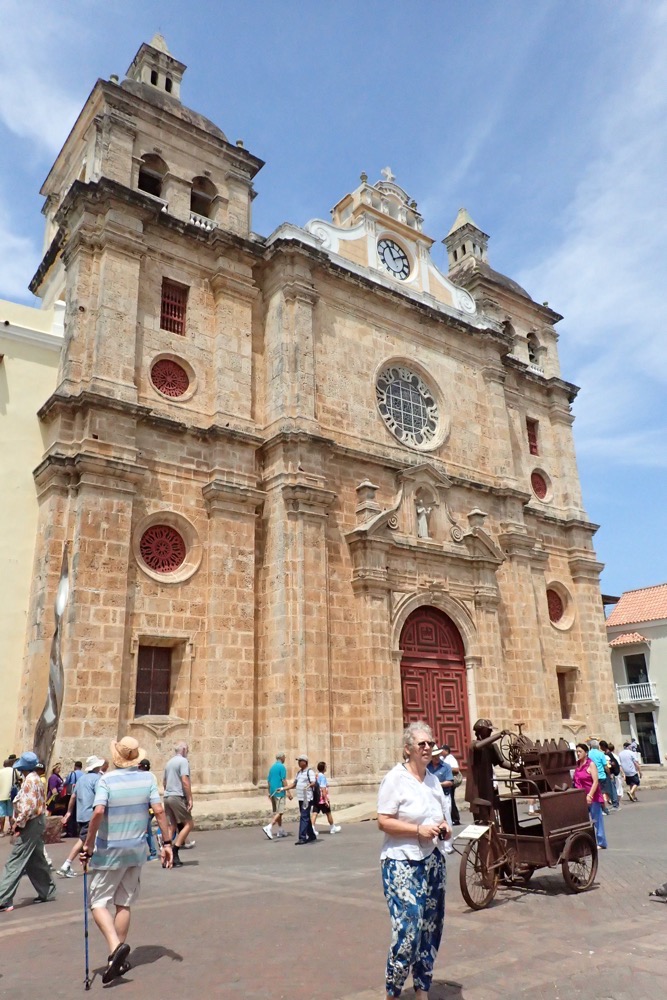 Directly in front of the church is the bronze sculpture Mujer Reclinada, (RecliningWoman) by an artist named Botero. He copped a lot of criticism for placing a naked woman directly outside the Monasterio de San Pedro Cláver, with people saying it was inappropriate for a statue of this type to be placed beside a church – his response? Have you been to the Vatican? It is covered in naked people. Touche Signor Botero.
Directly in front of the church is the bronze sculpture Mujer Reclinada, (RecliningWoman) by an artist named Botero. He copped a lot of criticism for placing a naked woman directly outside the Monasterio de San Pedro Cláver, with people saying it was inappropriate for a statue of this type to be placed beside a church – his response? Have you been to the Vatican? It is covered in naked people. Touche Signor Botero.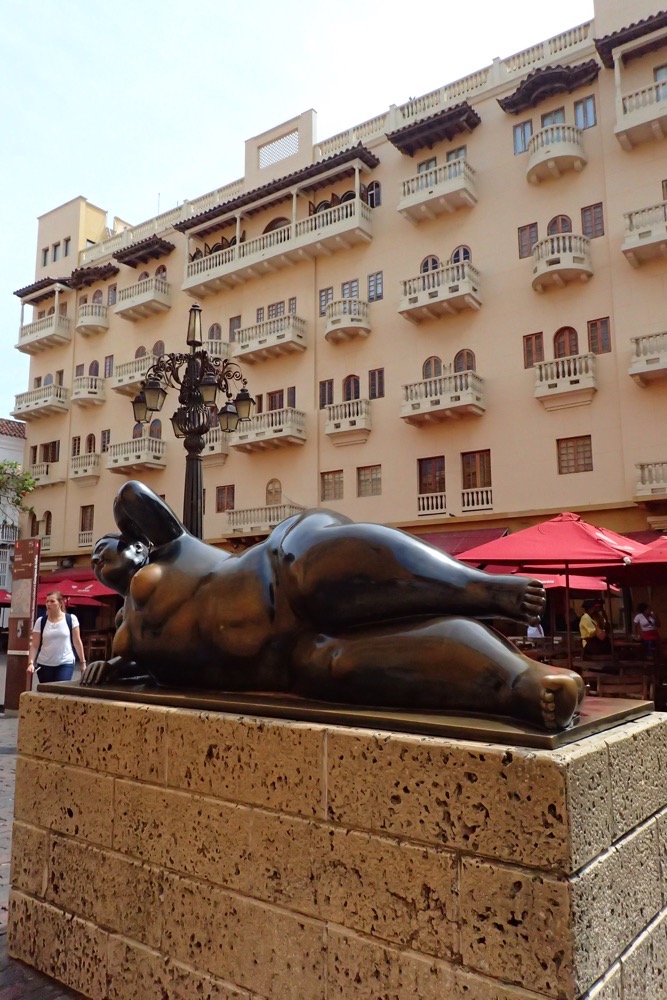 Buy your own Mujer Reclinada…
Buy your own Mujer Reclinada…
 Inside is another cloistered courtyard which is also home to an active monastery community.
Inside is another cloistered courtyard which is also home to an active monastery community.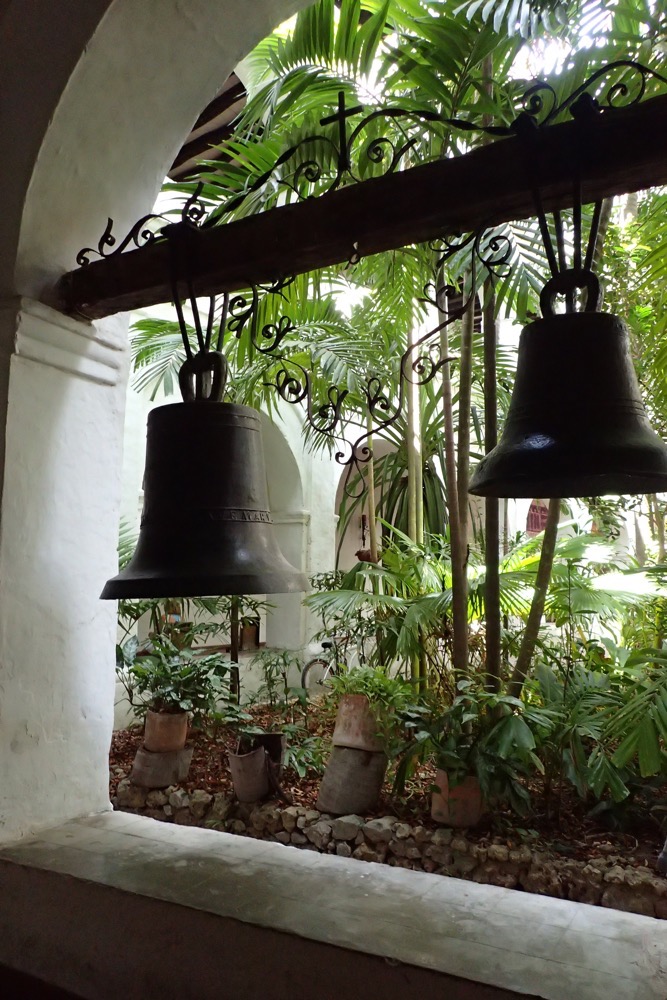 Many of these items in the Collection of Religious Art were created form the 16th to 20th centuries, being sacradotal in origin, many of the artists names were lost. These items have been either donated to the Jesuits or rescued by them when buildings were being destroyed for redevelopment.
Many of these items in the Collection of Religious Art were created form the 16th to 20th centuries, being sacradotal in origin, many of the artists names were lost. These items have been either donated to the Jesuits or rescued by them when buildings were being destroyed for redevelopment. 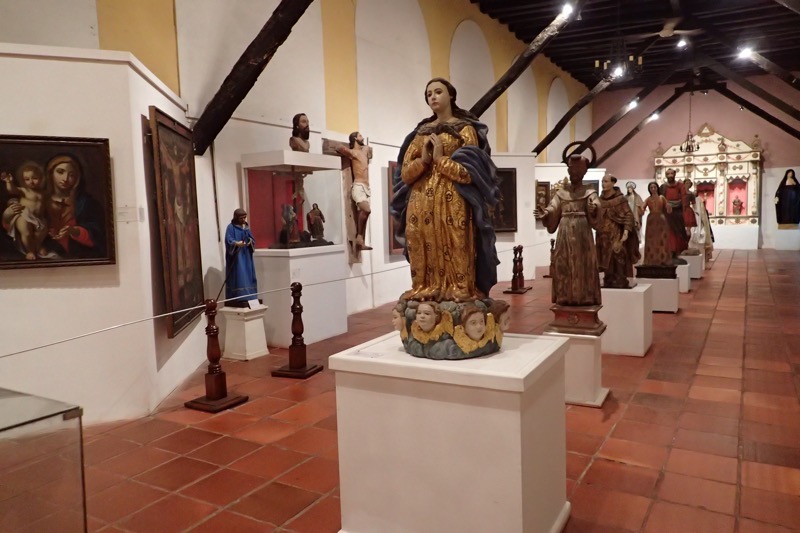 This altar is an example of what a modest chapel may contain – as compared to the impressive gold worked altar at La Popa. You can see a Freemason influence with the all seeing eye of God at the very top of the altar.
This altar is an example of what a modest chapel may contain – as compared to the impressive gold worked altar at La Popa. You can see a Freemason influence with the all seeing eye of God at the very top of the altar.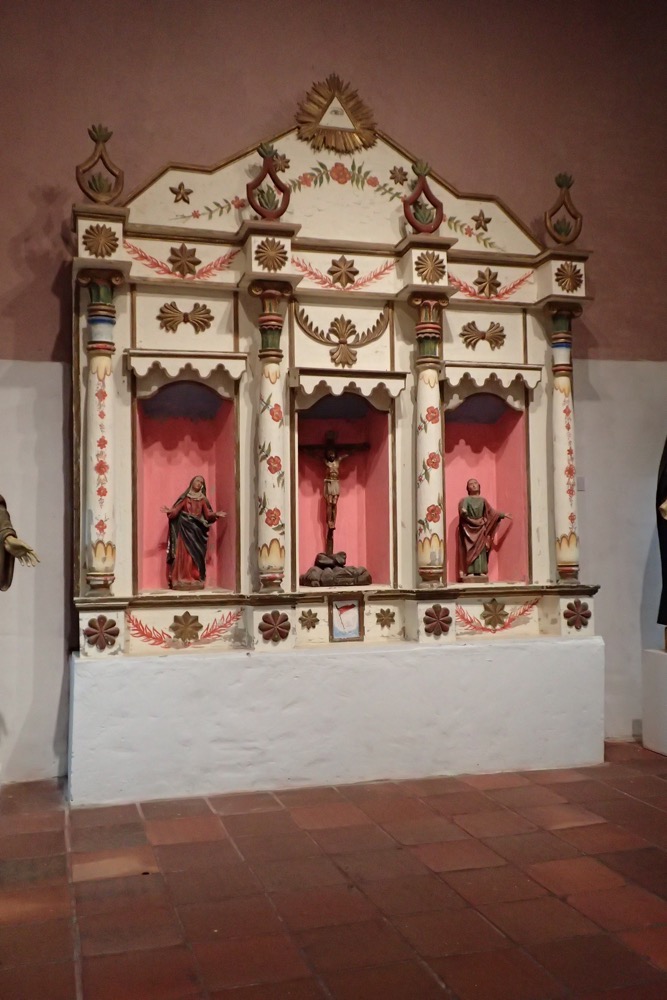 The ceiling at Monasterio de San Pedro Cláver.
The ceiling at Monasterio de San Pedro Cláver. And the nave that contains the remains of San Pedro Cláver.
And the nave that contains the remains of San Pedro Cláver.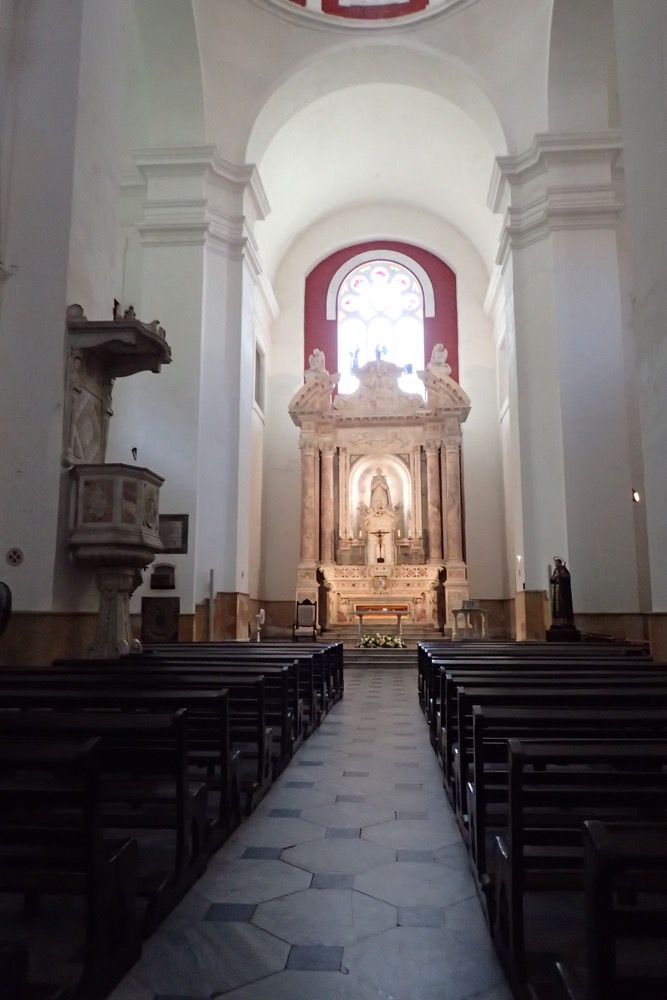 In the courtyard was some domestic macaws clambering all over the tourists. I have to say with those large talons and pointy looking beaks, I only held them momentarily and it was with some trepidation! I don’t trust birds. 😛
In the courtyard was some domestic macaws clambering all over the tourists. I have to say with those large talons and pointy looking beaks, I only held them momentarily and it was with some trepidation! I don’t trust birds. 😛 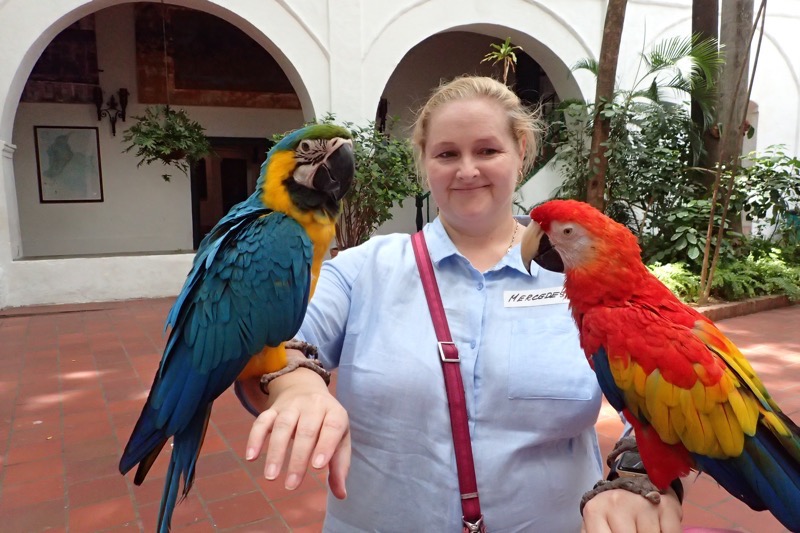
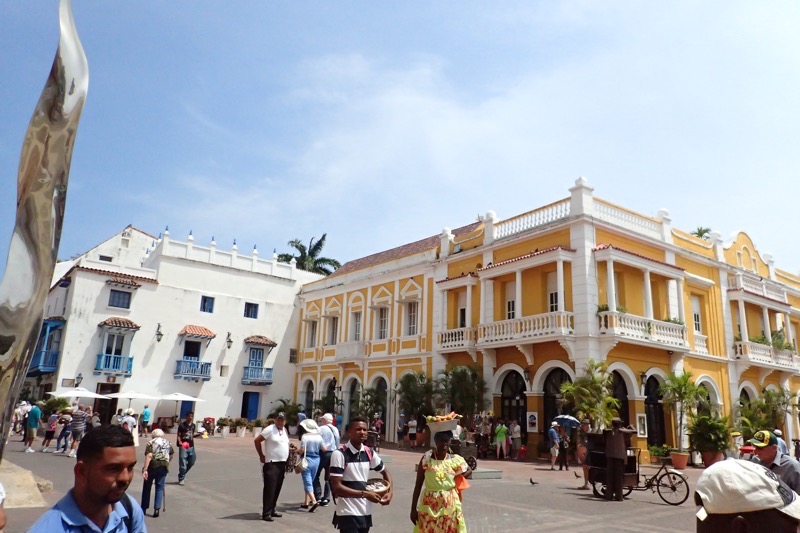
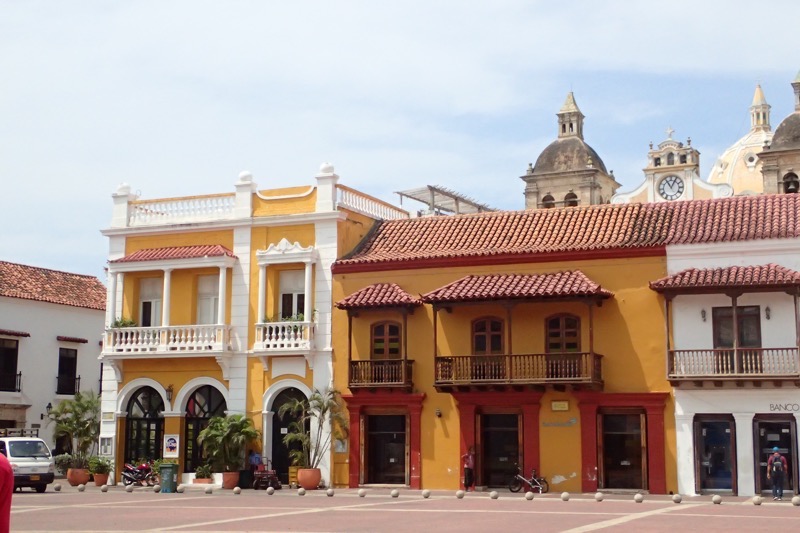
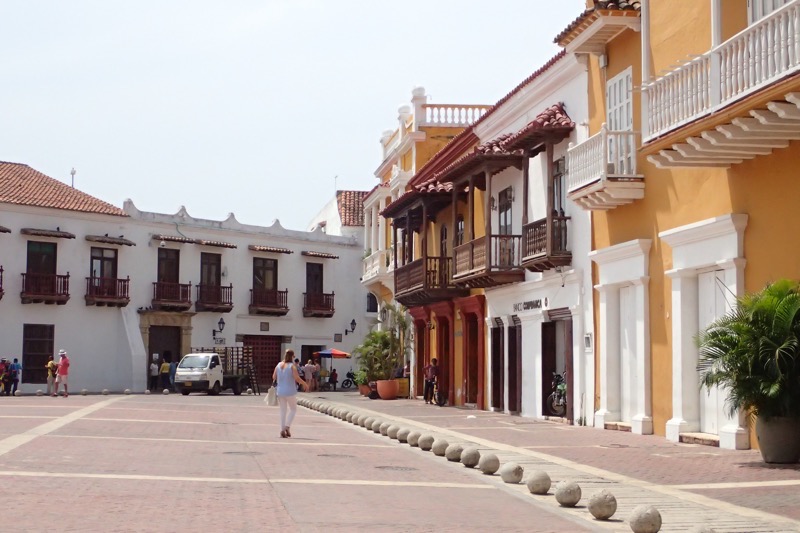
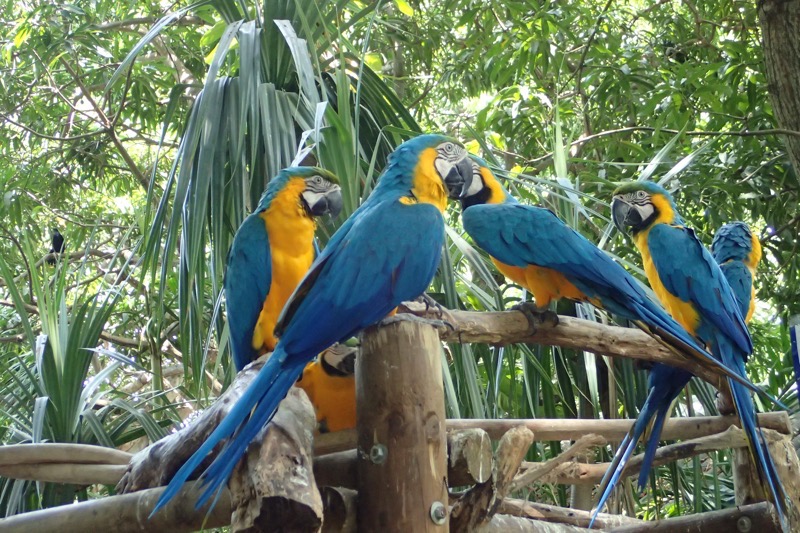

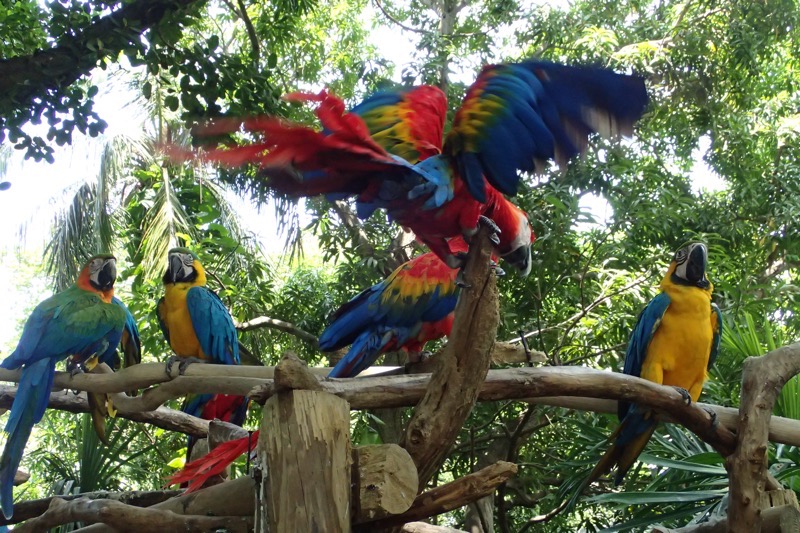
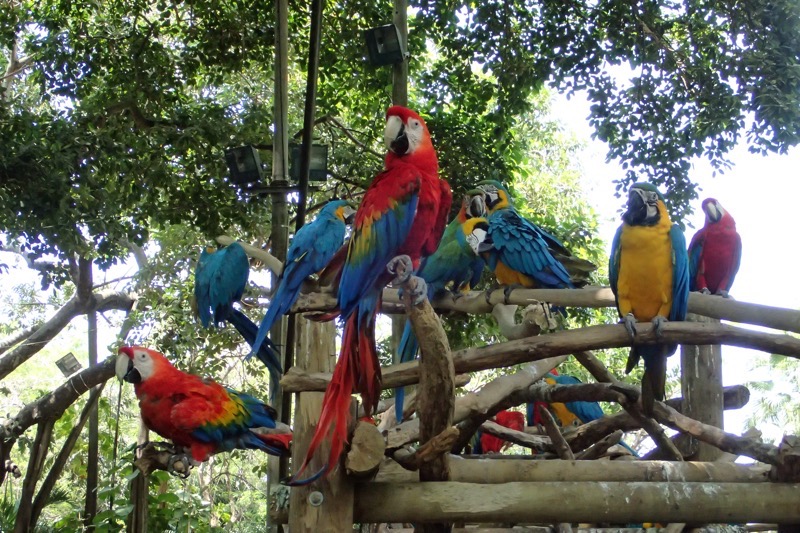
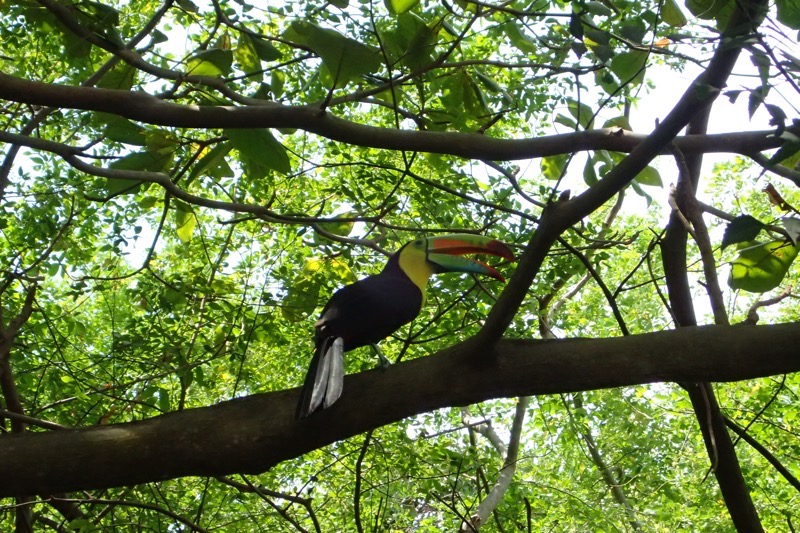

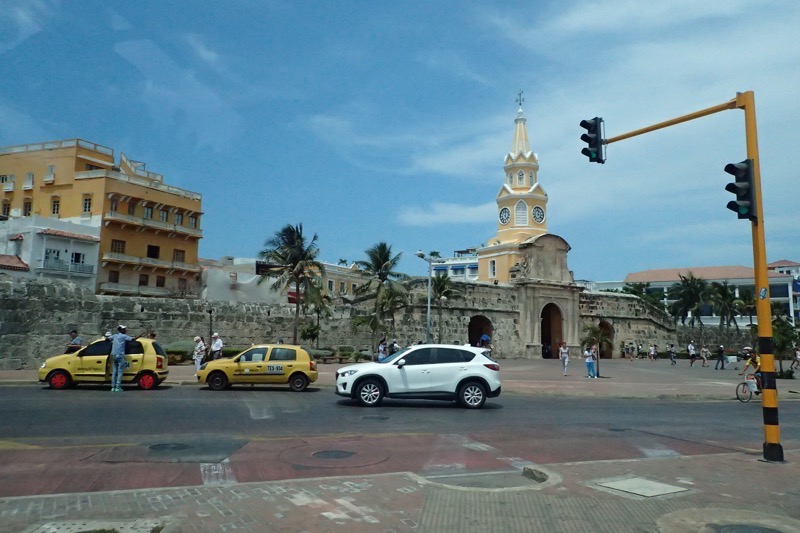
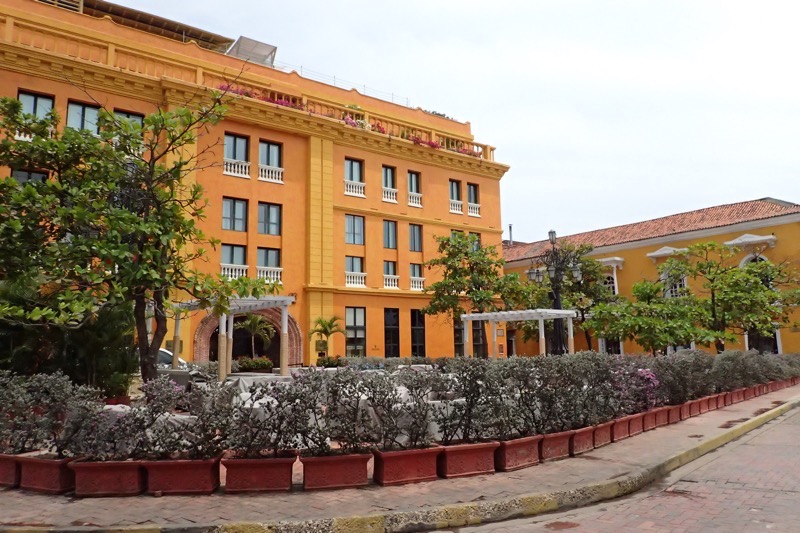
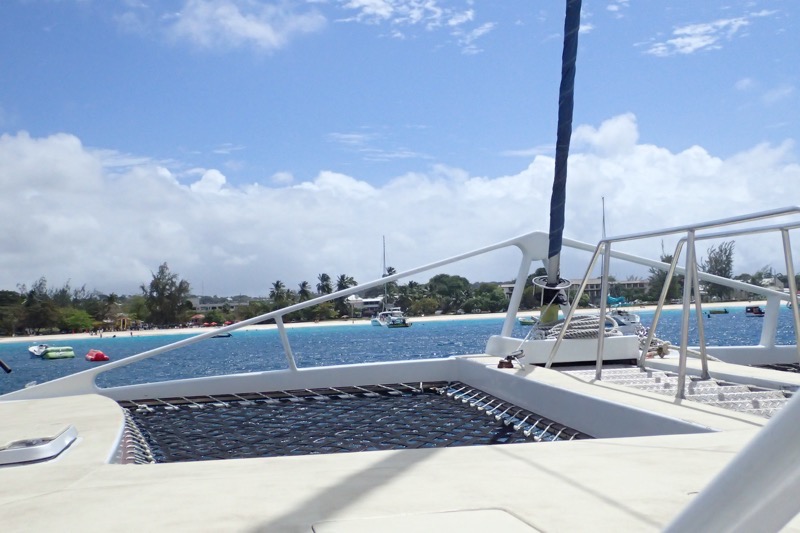
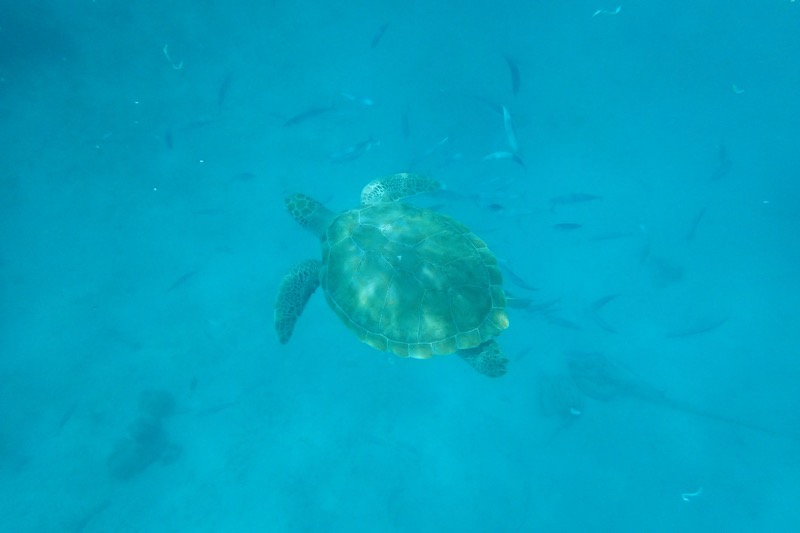
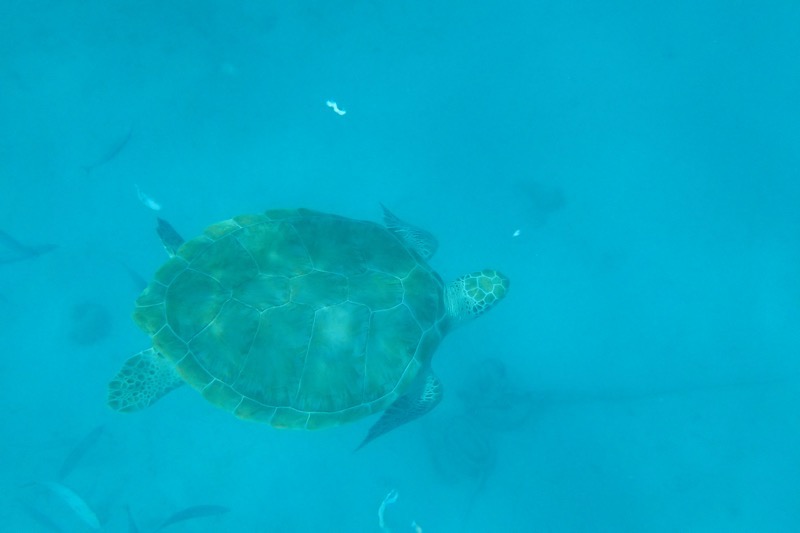
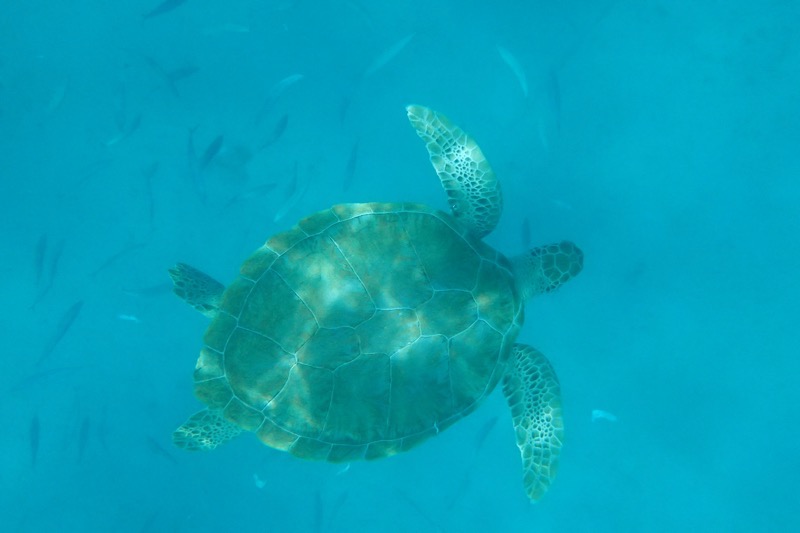
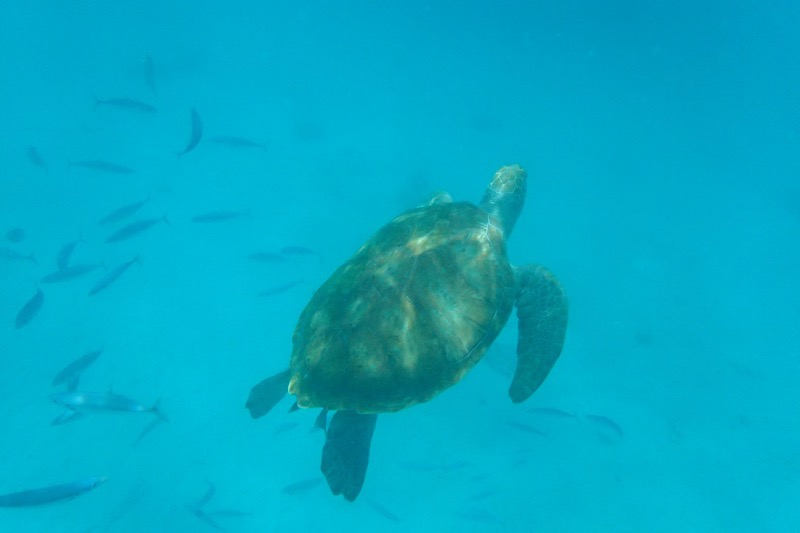
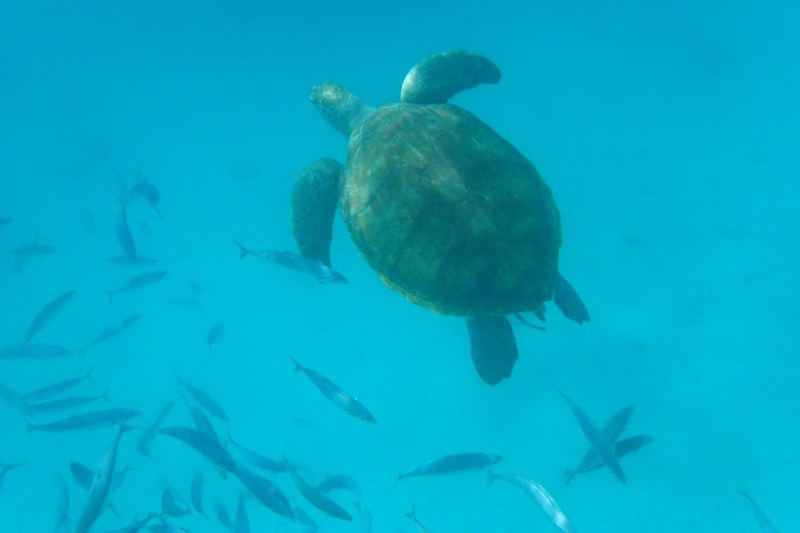

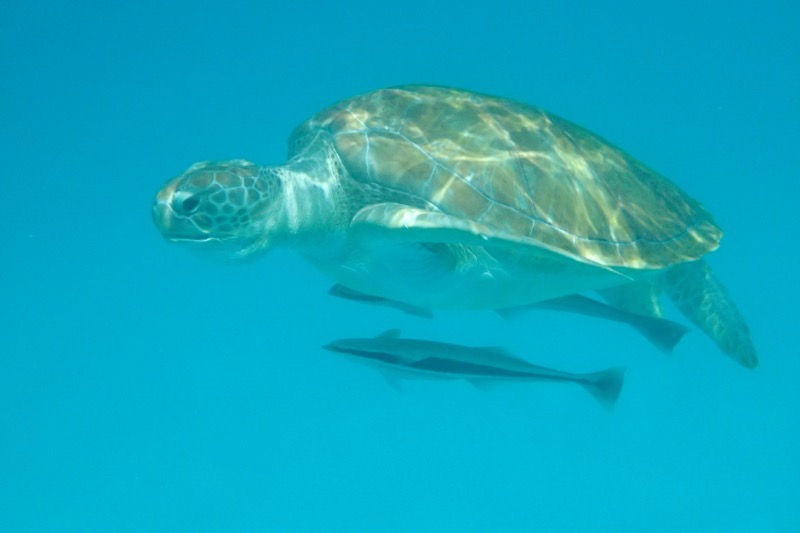 Turtle bum…
Turtle bum…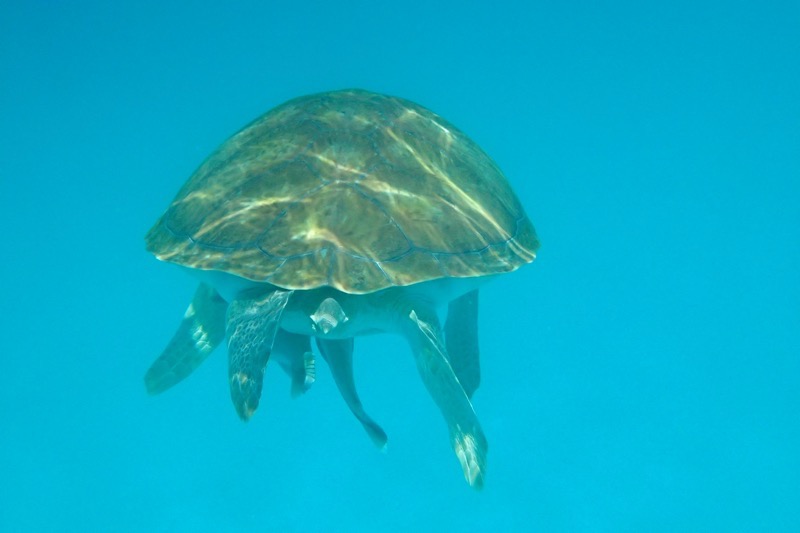
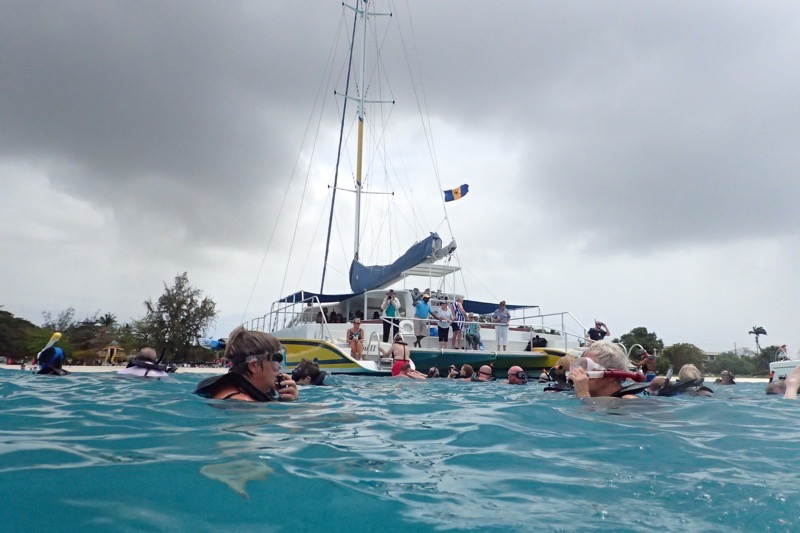
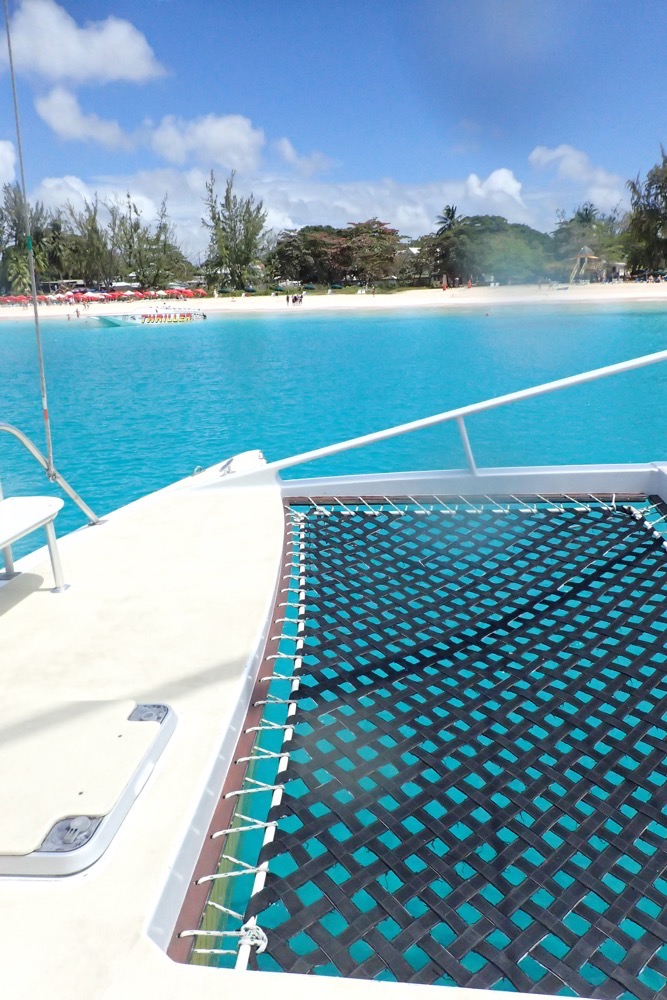
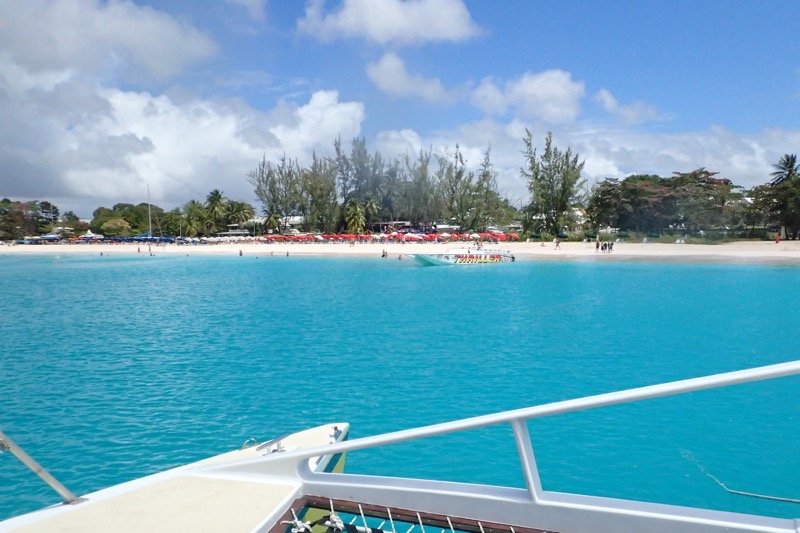


 After our little turtle swim, we moved the boat about a kilometre or so and were directed towards a dark shadow underwater to explore a recent shipwreck. The boat itself had been a famous party boat (the name of which escapes me right now), and it had sunk in about 2002, so it didn’t have lots of established corals on it, but it was a nice haven for lots of fishes. It was a bit of a struggle to swim the 50m or so against the current to get to the shipwreck, but because I was the first to jump in off the catamaran deck rather than wait for the steps, I managed to have a paddle around and a look about before the rest of the group caught up. Once the rest of the group got out there, all my photos have dog paddling OAPs in them! lol. One of the boat crew who was supervising in case anyone got into trouble in the water had bought out some food to feed the fishes and when he suddenly threw it all in the water, the fishes came up out of the wreck and I found myself surrounded by these little stripey little guys. It was very cool.
After our little turtle swim, we moved the boat about a kilometre or so and were directed towards a dark shadow underwater to explore a recent shipwreck. The boat itself had been a famous party boat (the name of which escapes me right now), and it had sunk in about 2002, so it didn’t have lots of established corals on it, but it was a nice haven for lots of fishes. It was a bit of a struggle to swim the 50m or so against the current to get to the shipwreck, but because I was the first to jump in off the catamaran deck rather than wait for the steps, I managed to have a paddle around and a look about before the rest of the group caught up. Once the rest of the group got out there, all my photos have dog paddling OAPs in them! lol. One of the boat crew who was supervising in case anyone got into trouble in the water had bought out some food to feed the fishes and when he suddenly threw it all in the water, the fishes came up out of the wreck and I found myself surrounded by these little stripey little guys. It was very cool.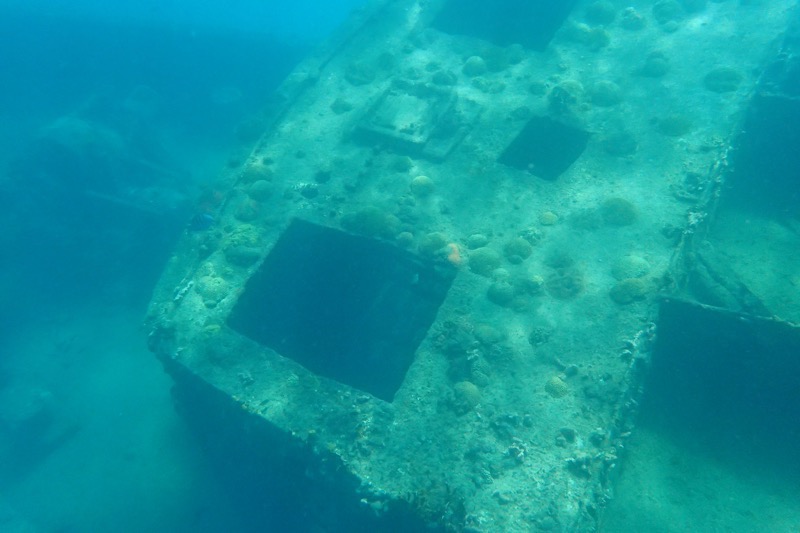

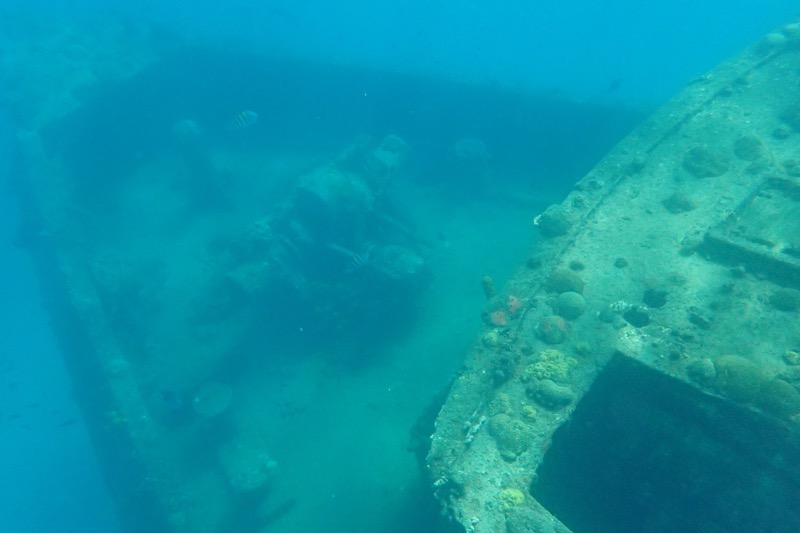
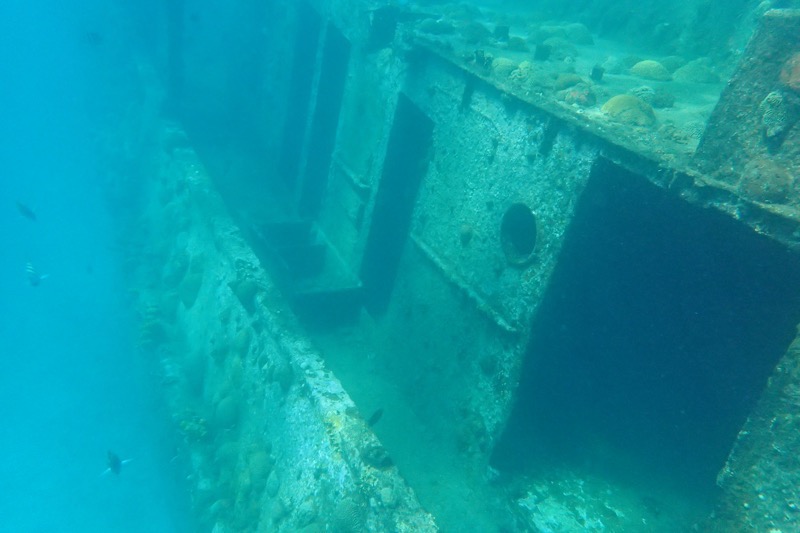

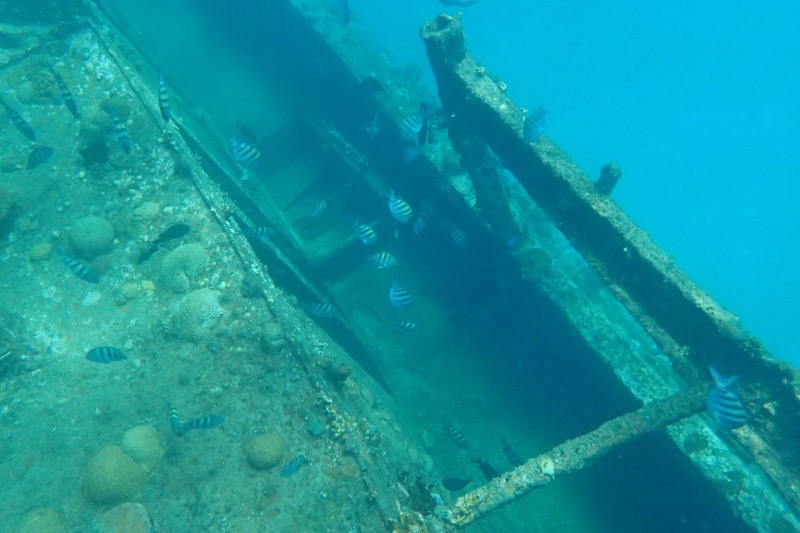
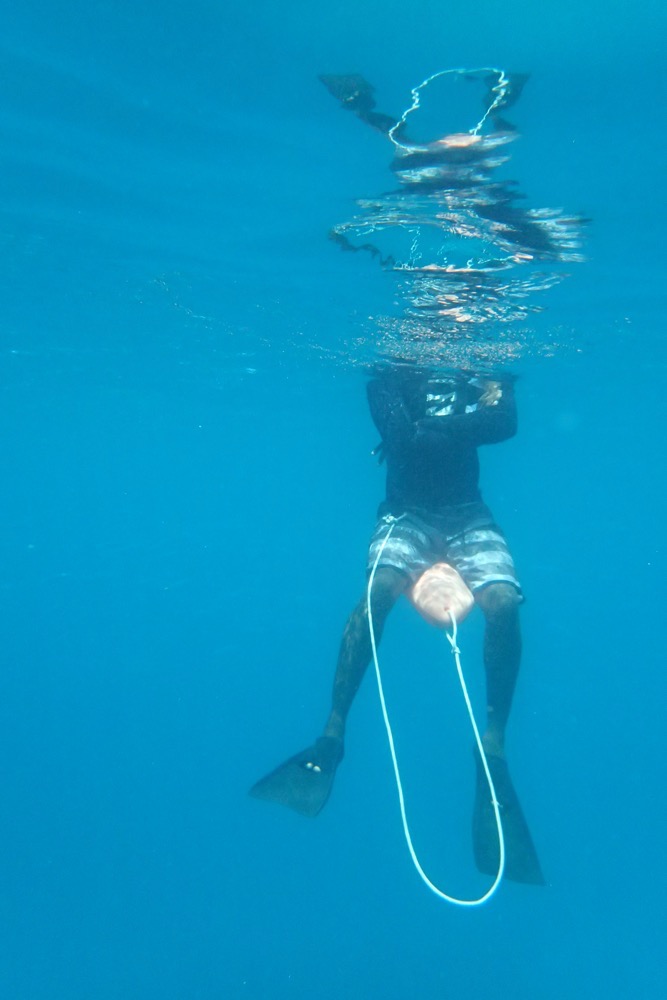
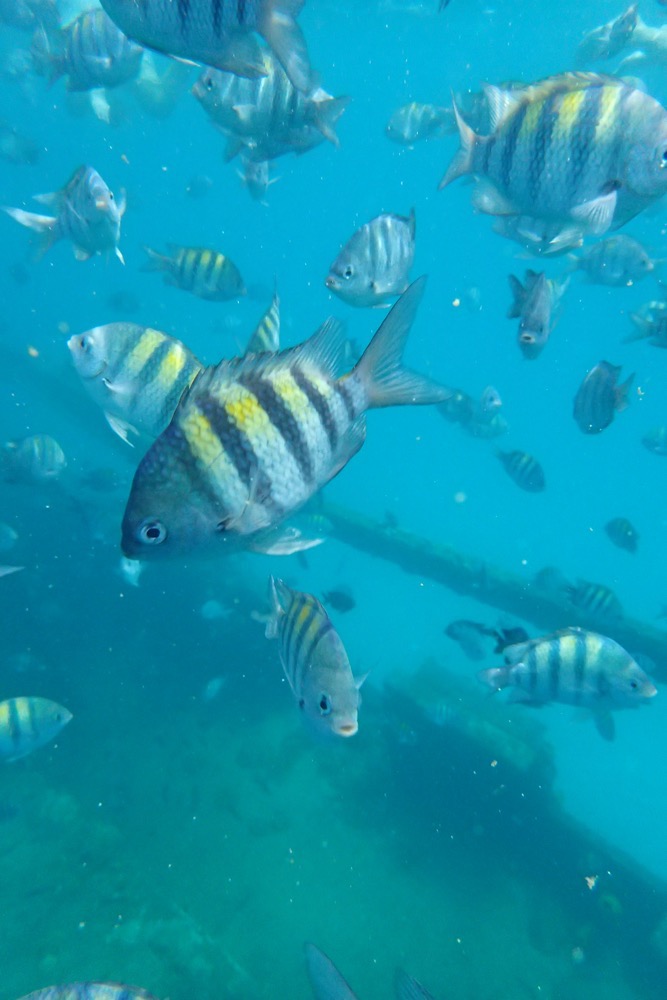


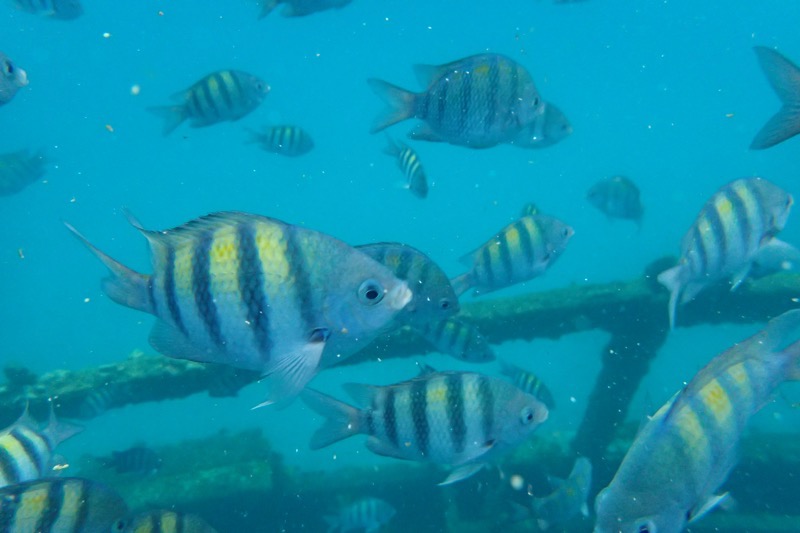

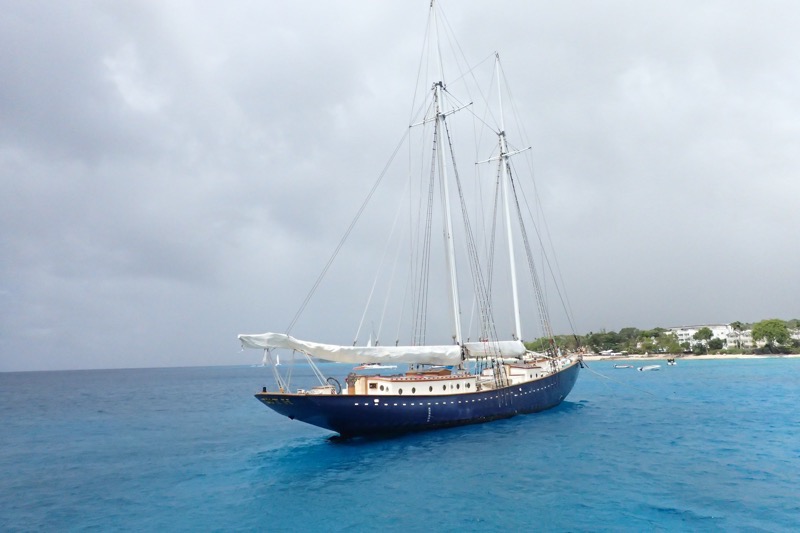
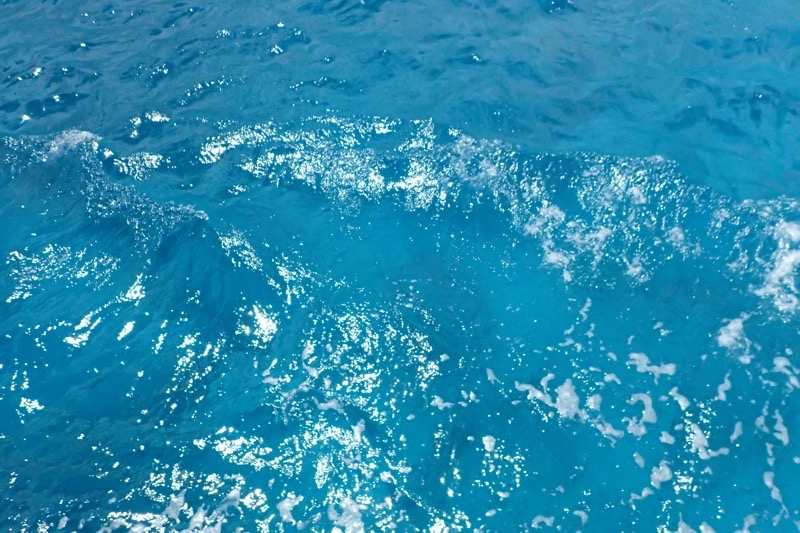
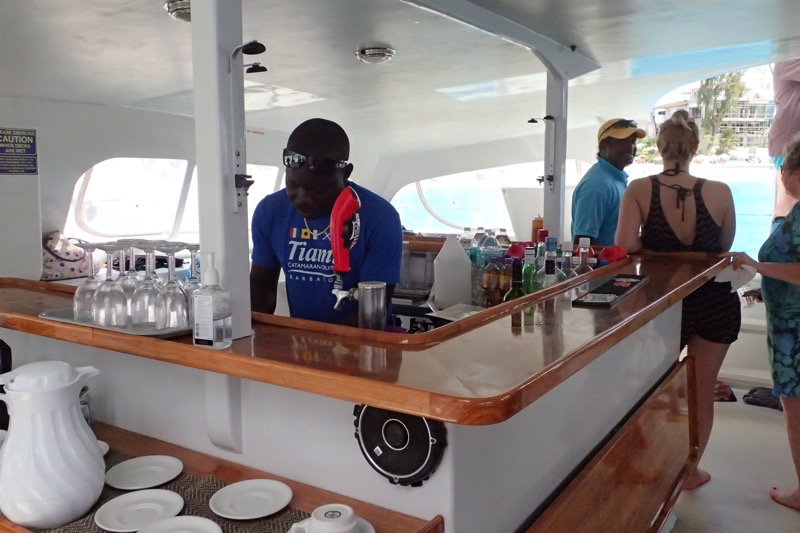
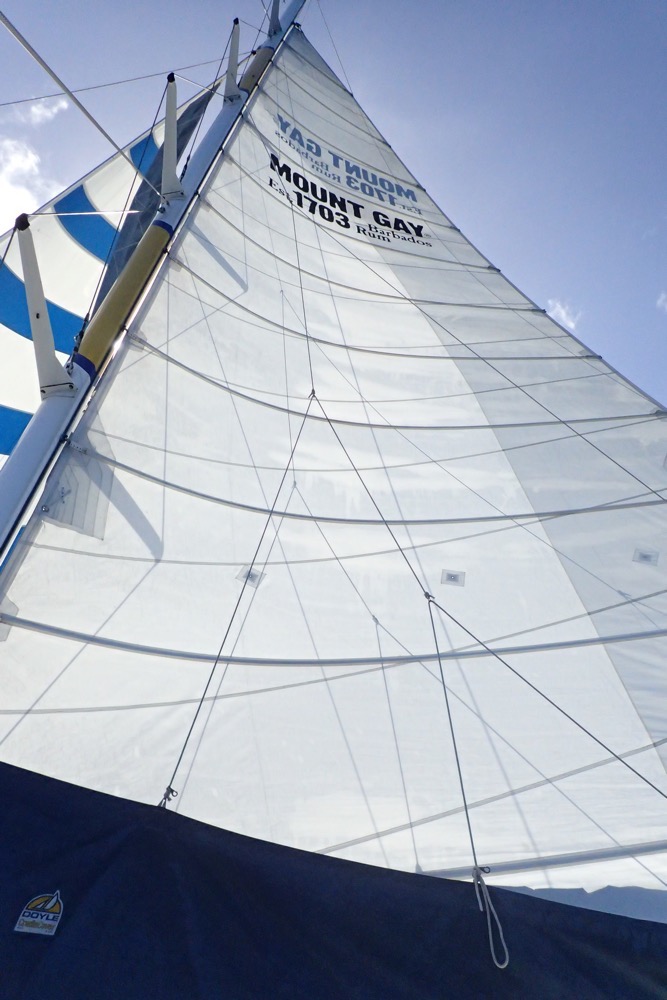
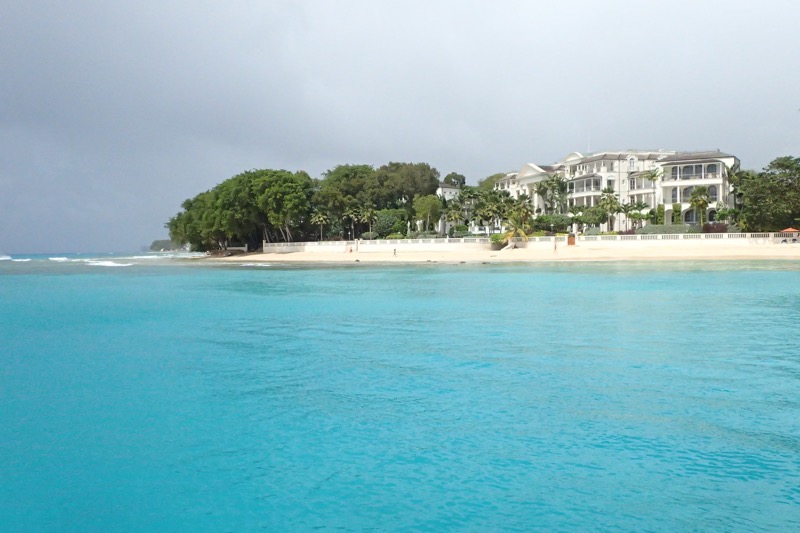
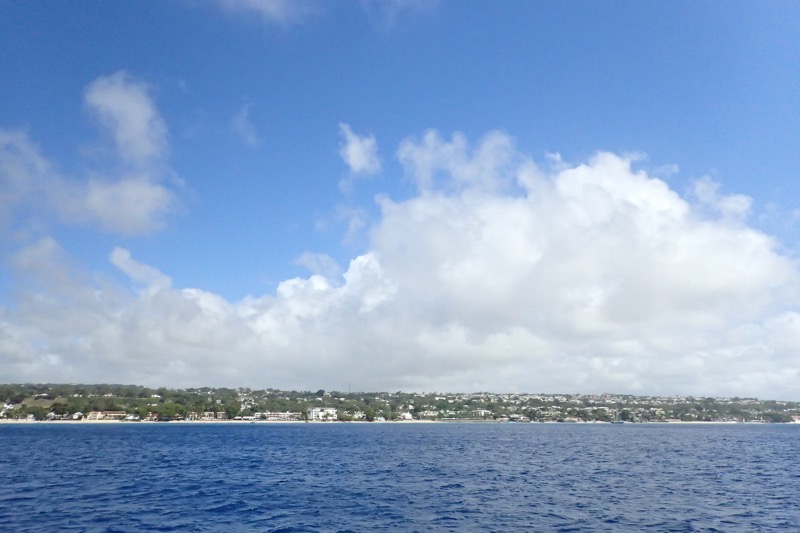
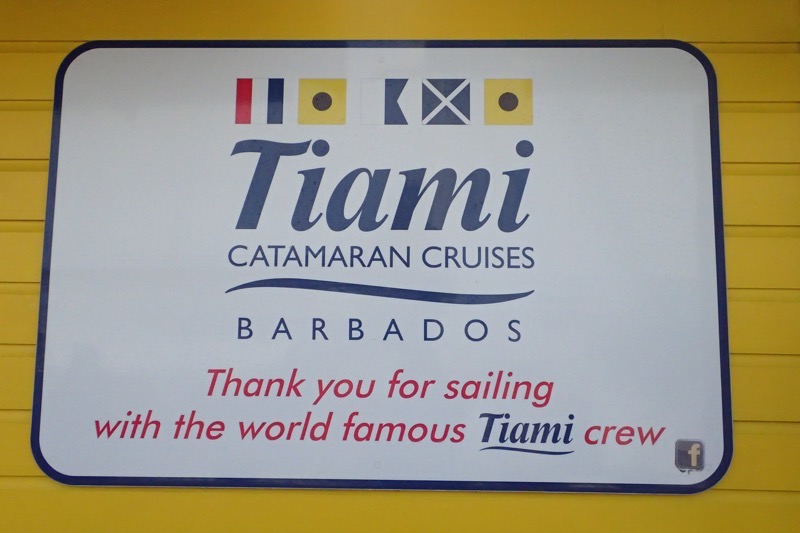
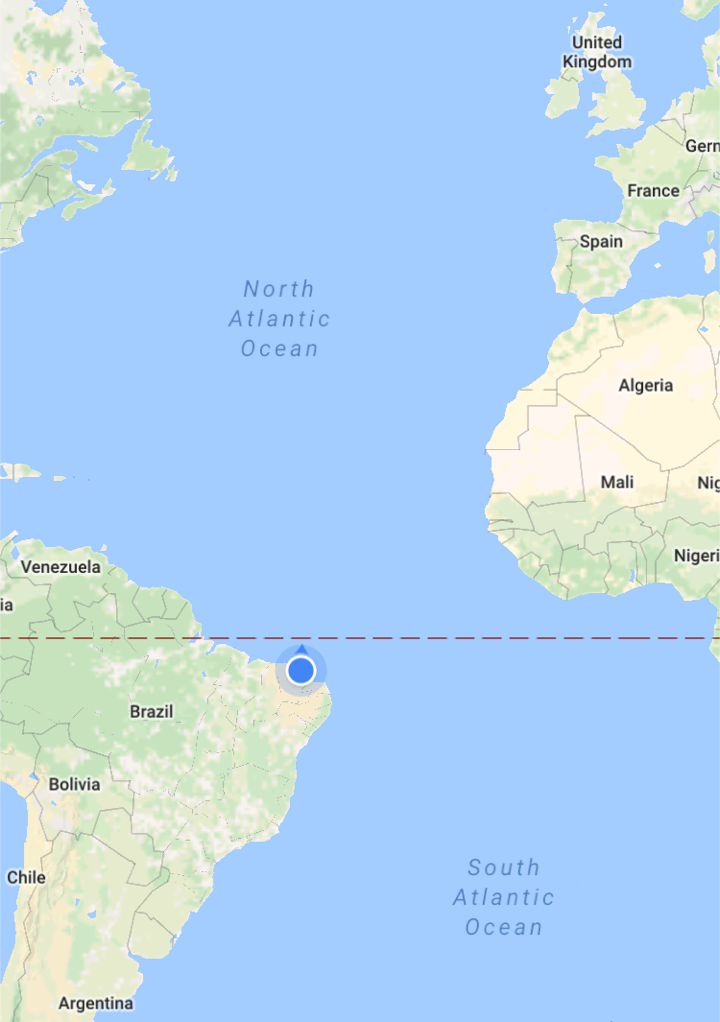
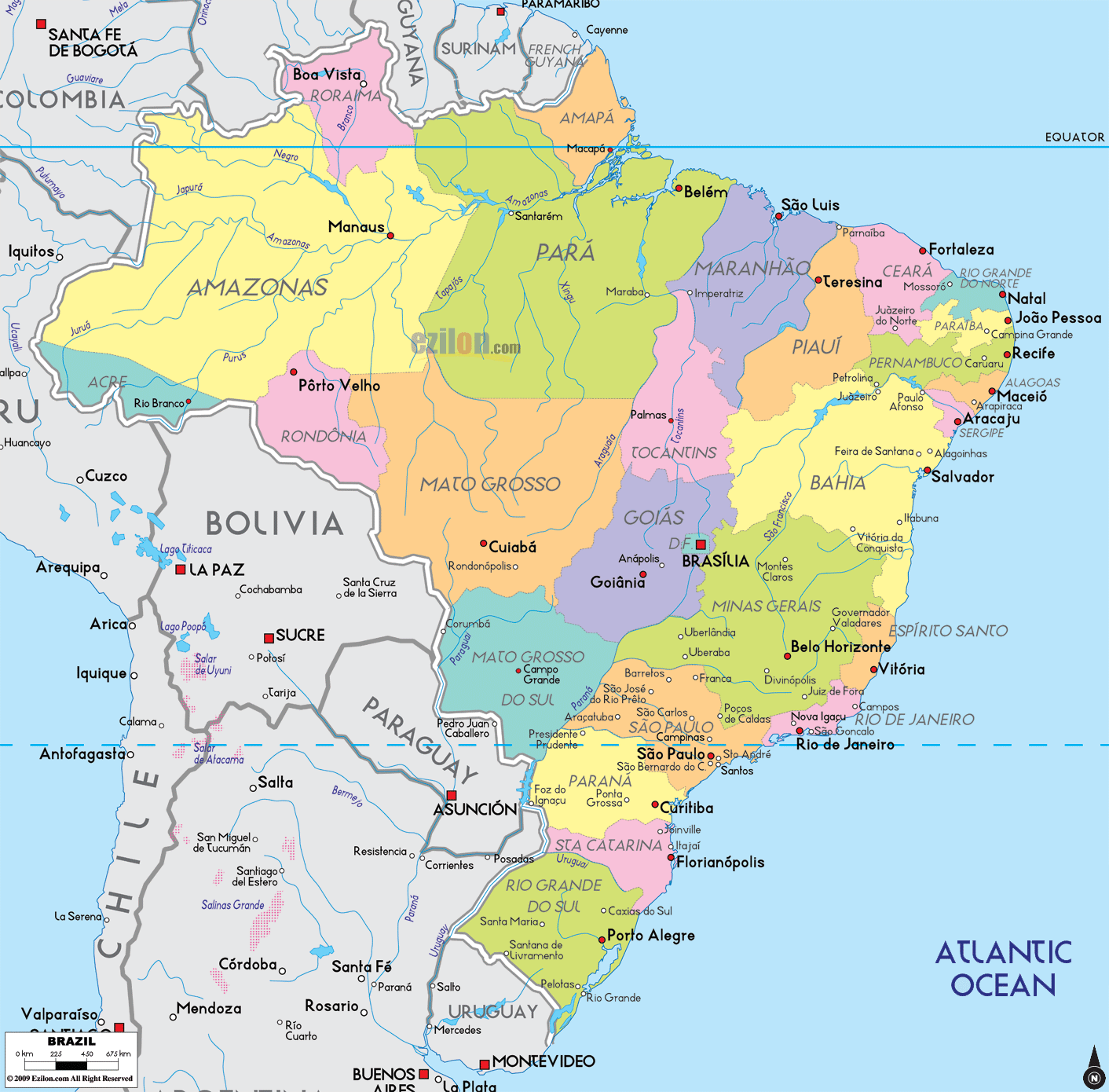

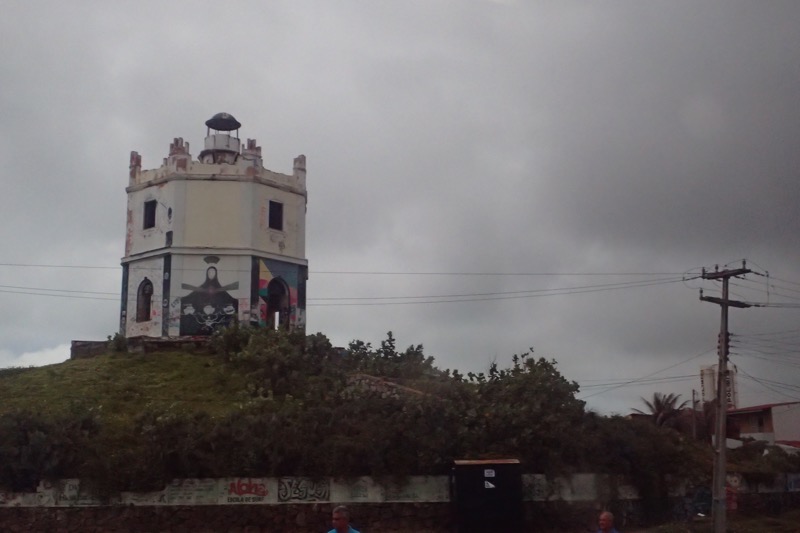
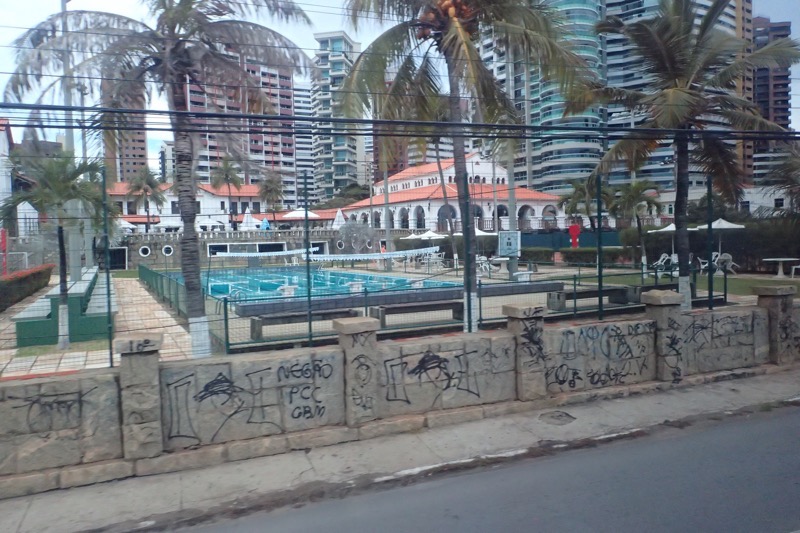
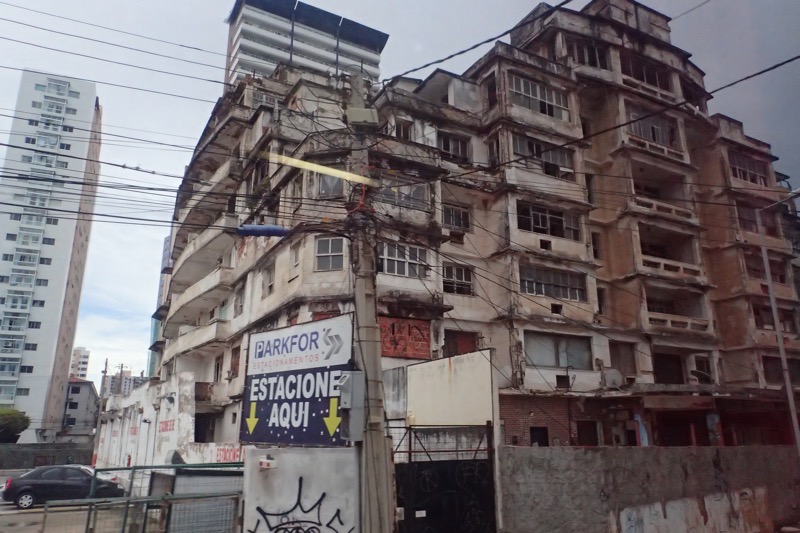

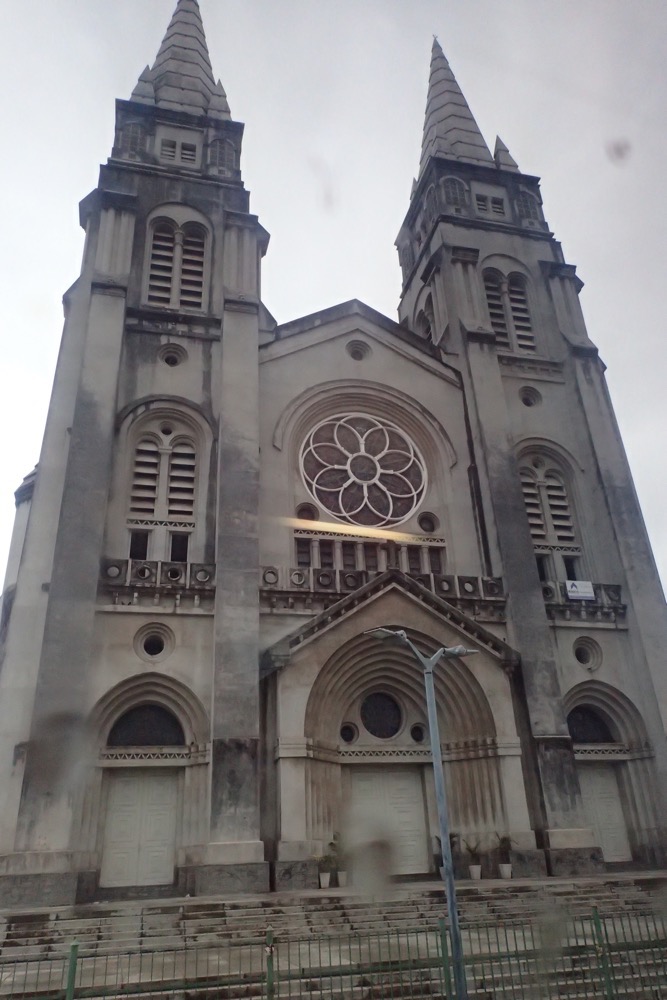

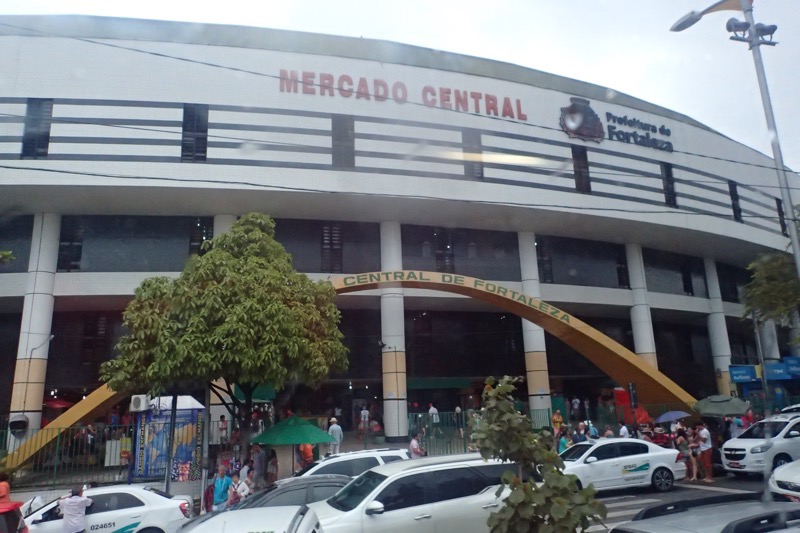

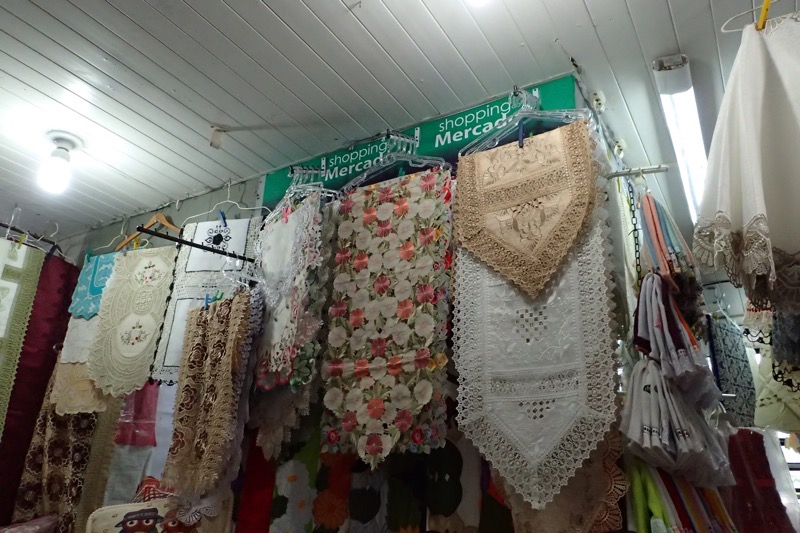 No lace, Mrs Bennet!
No lace, Mrs Bennet!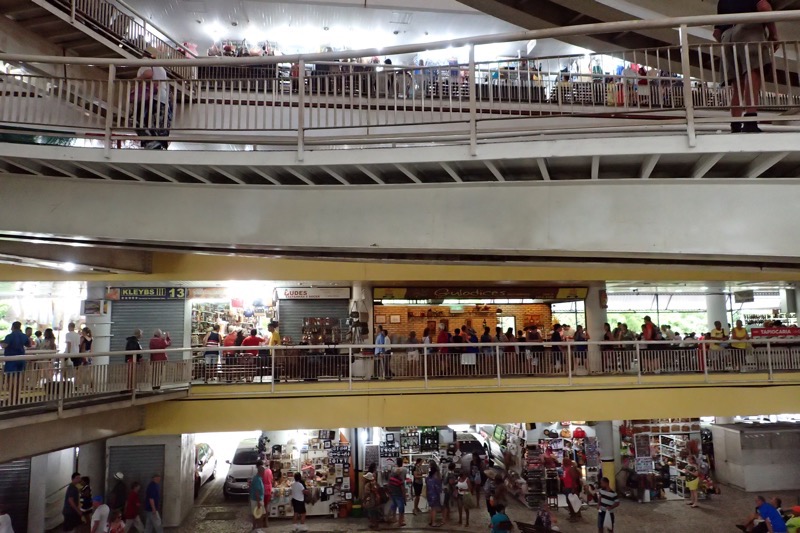
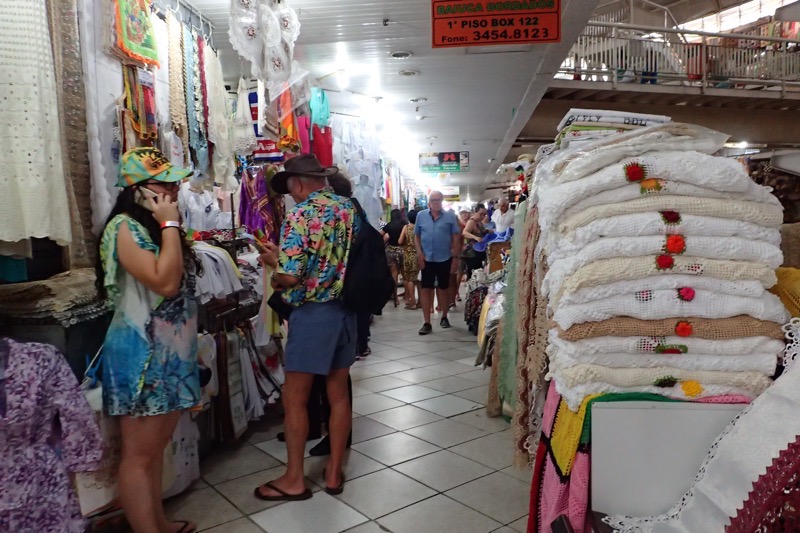








 Drove past the old prison – right in the centre of the city.
Drove past the old prison – right in the centre of the city.
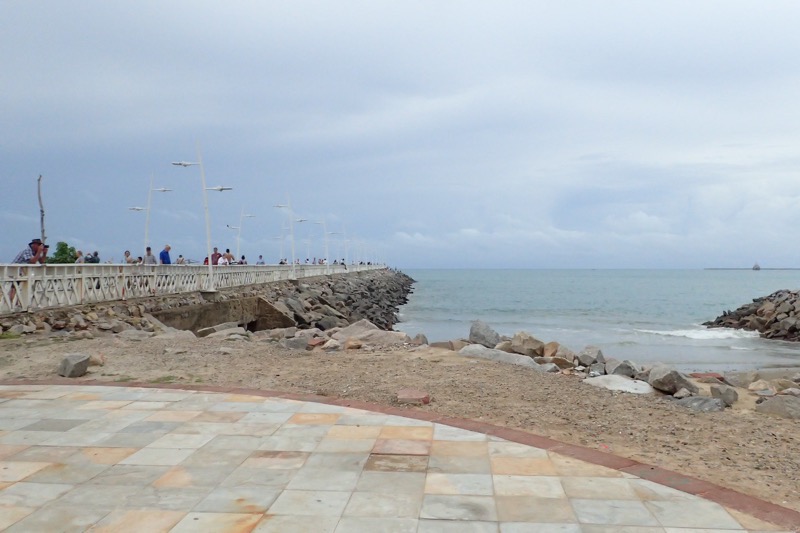

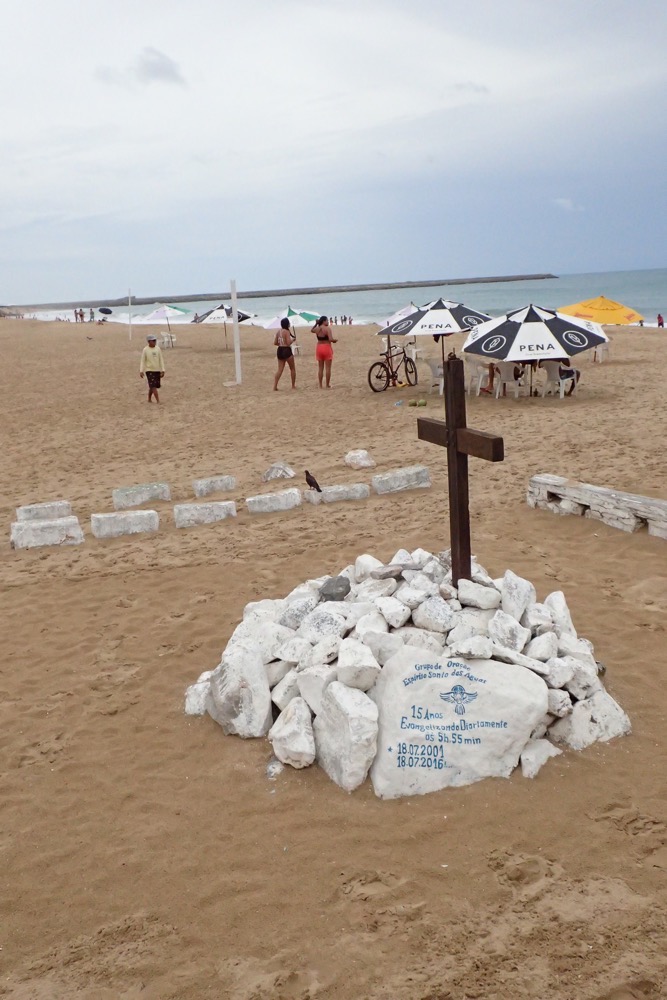 This could be quite a nice play to holiday… and it is apparently very popular with domestic tourists, as well as foreign ones.
This could be quite a nice play to holiday… and it is apparently very popular with domestic tourists, as well as foreign ones.
